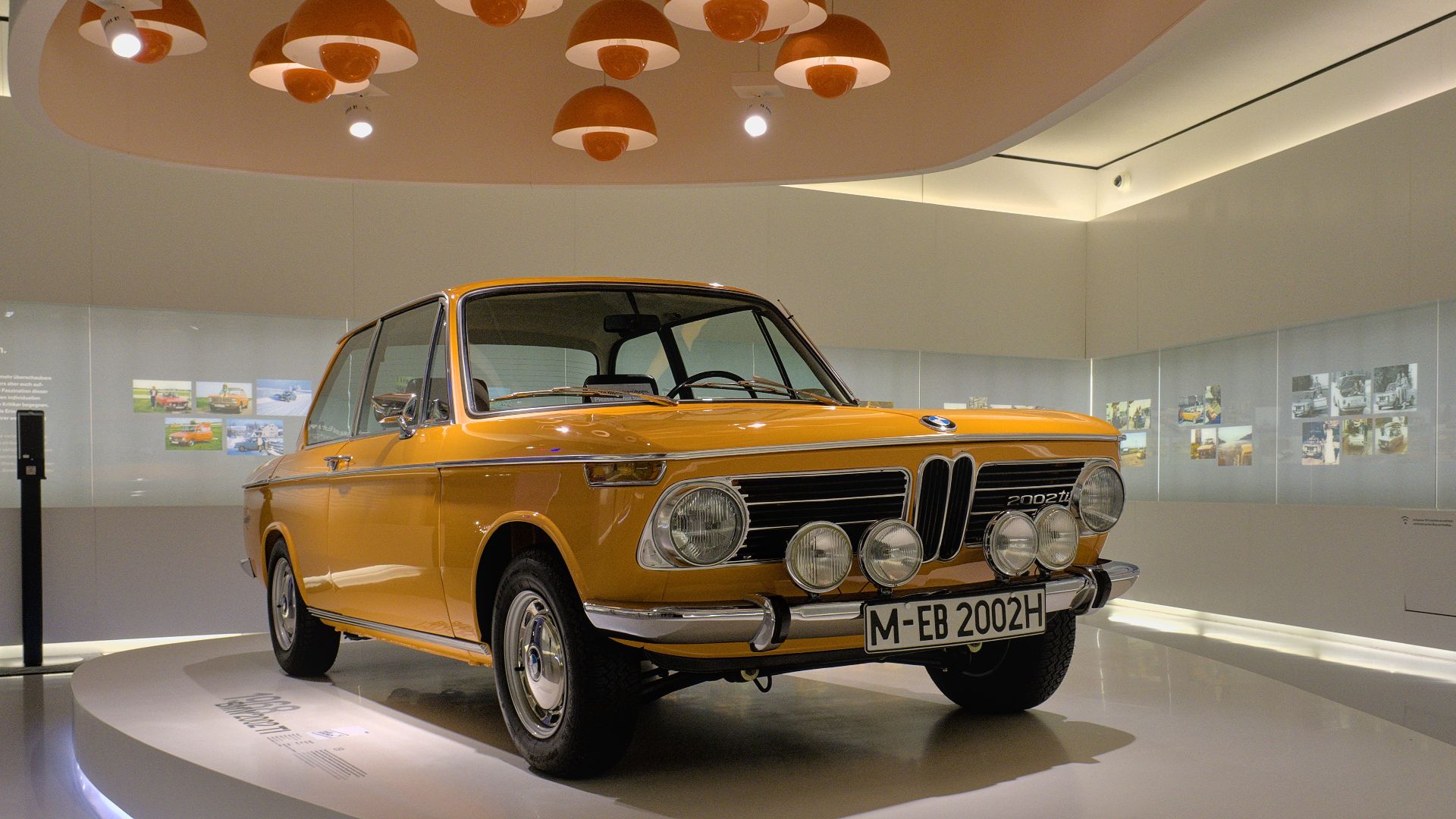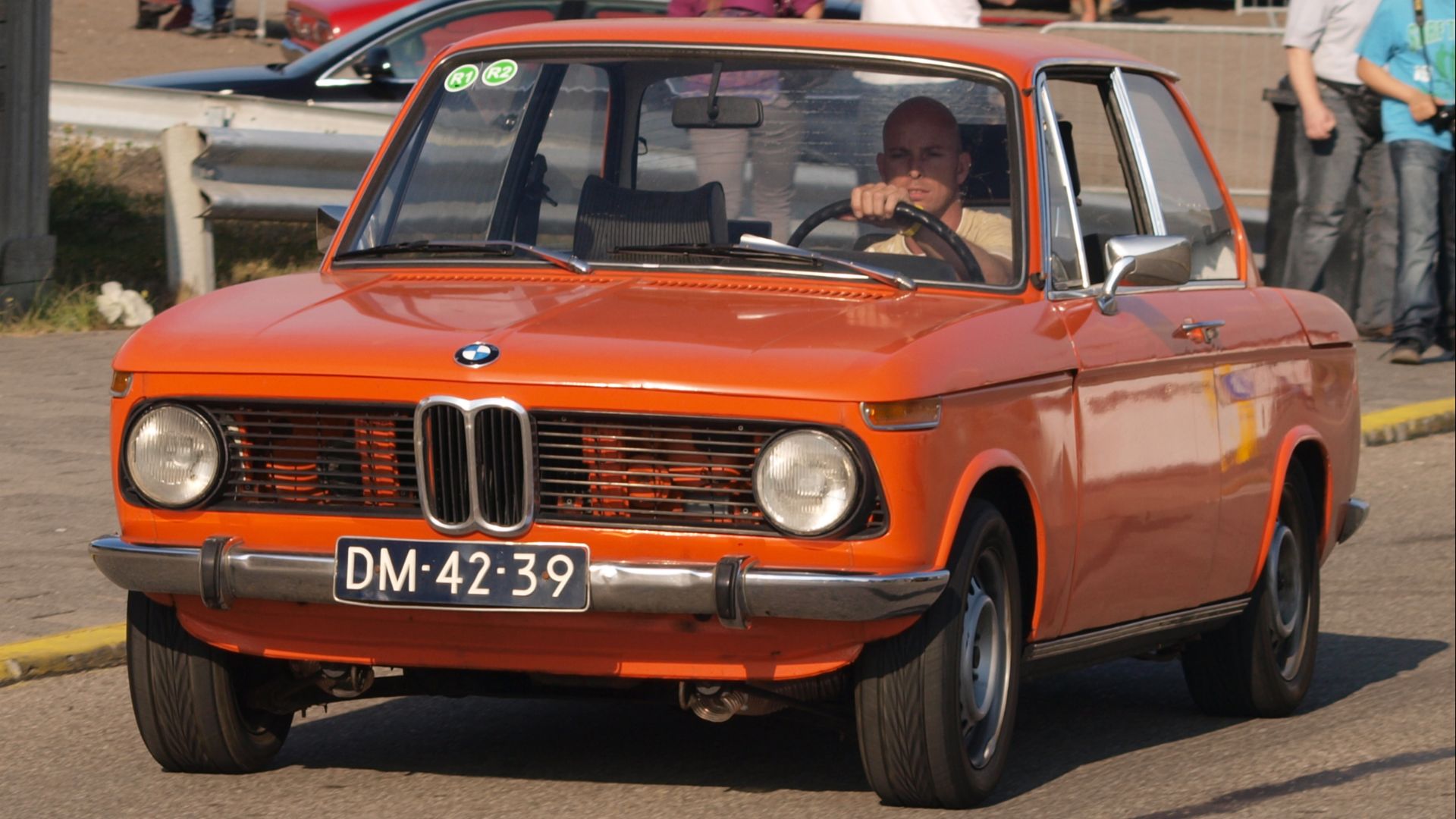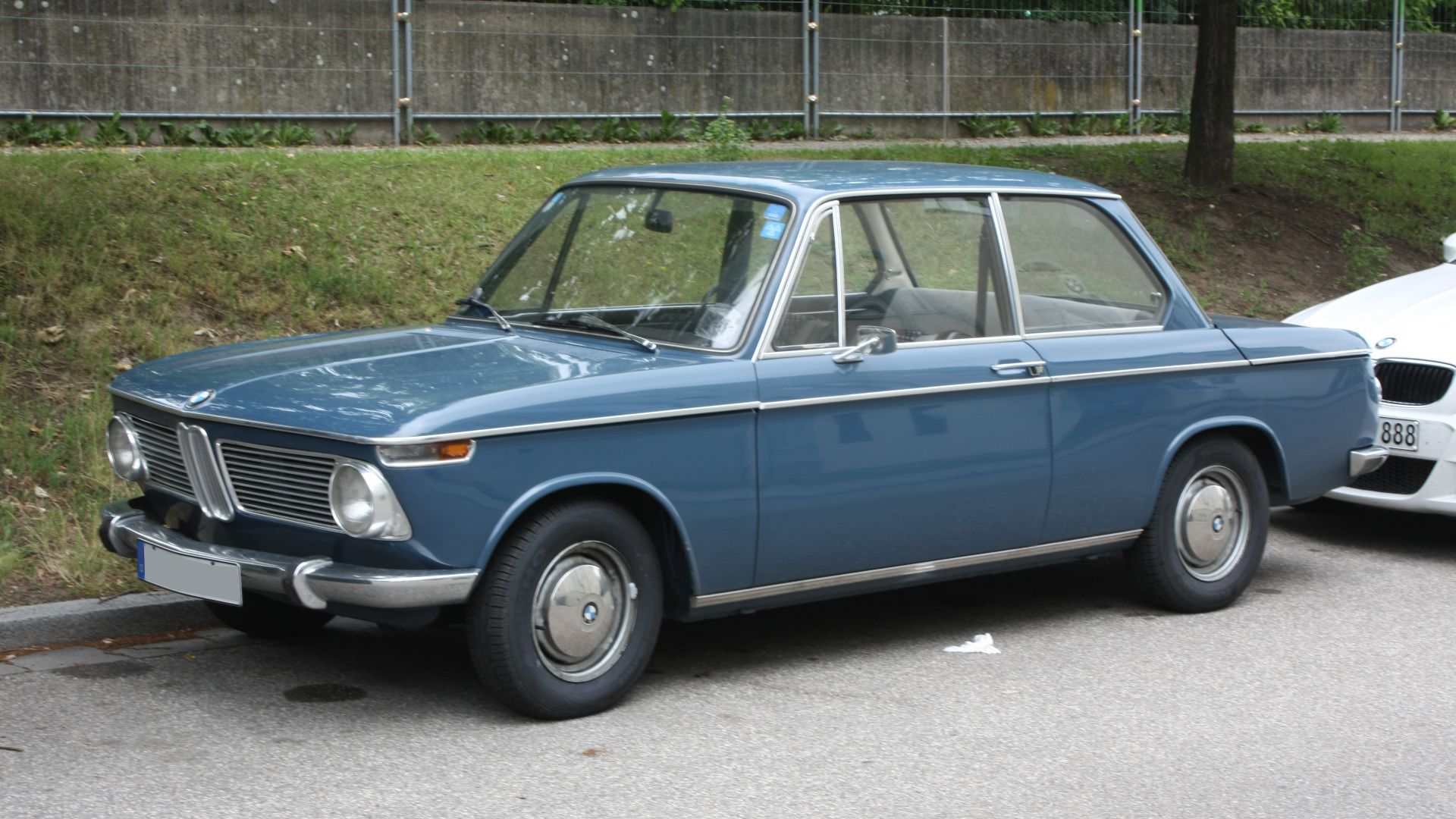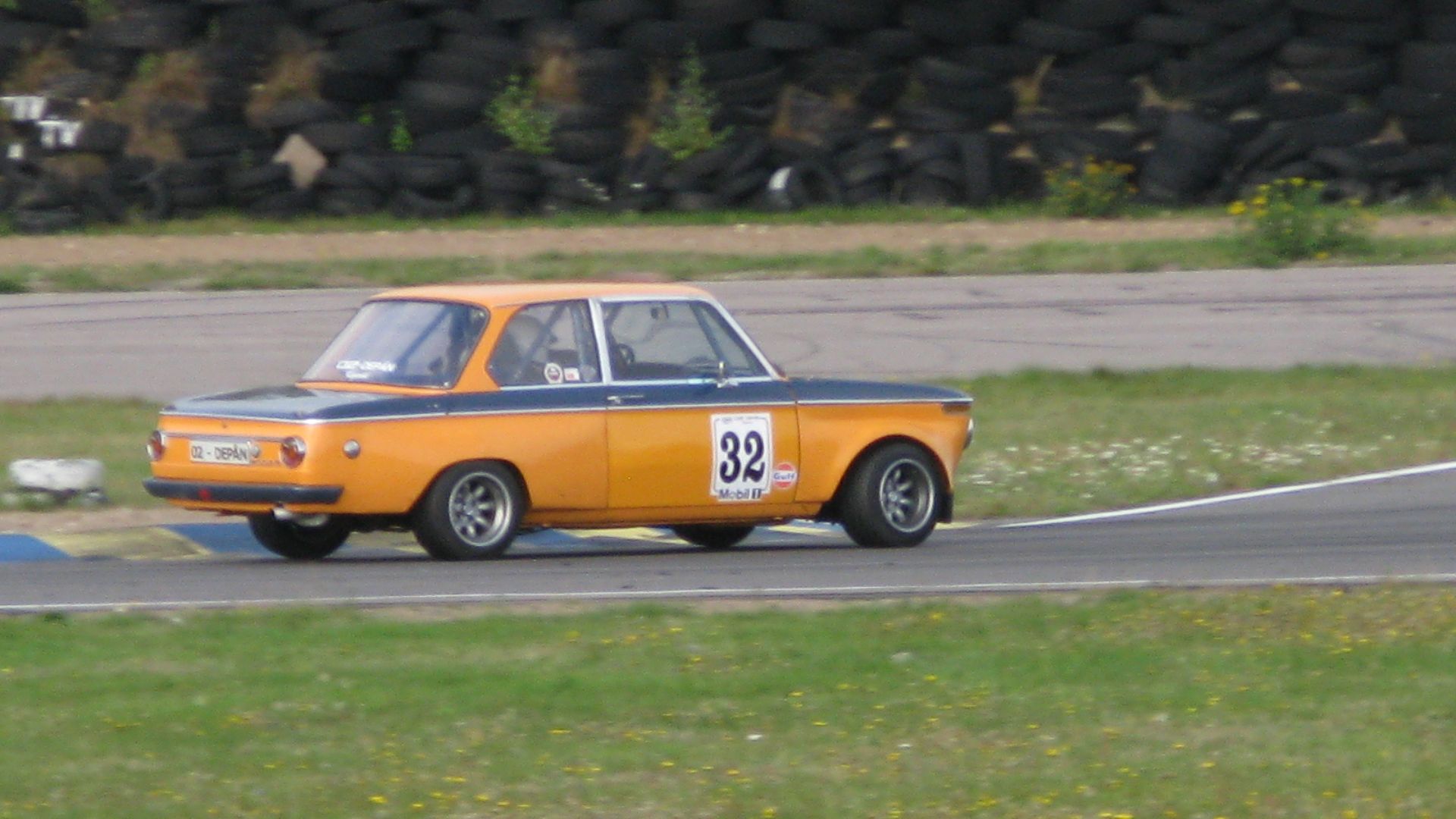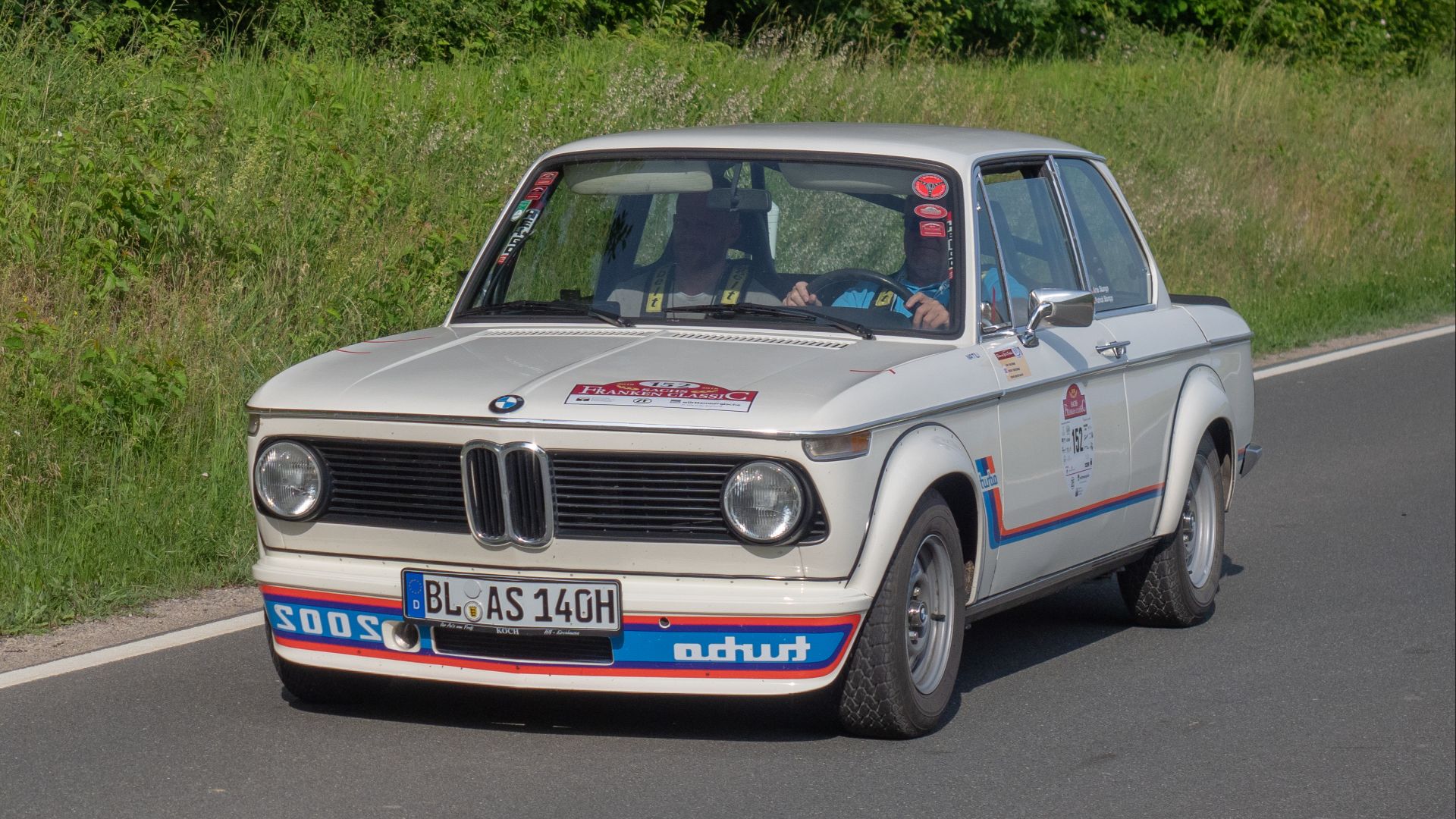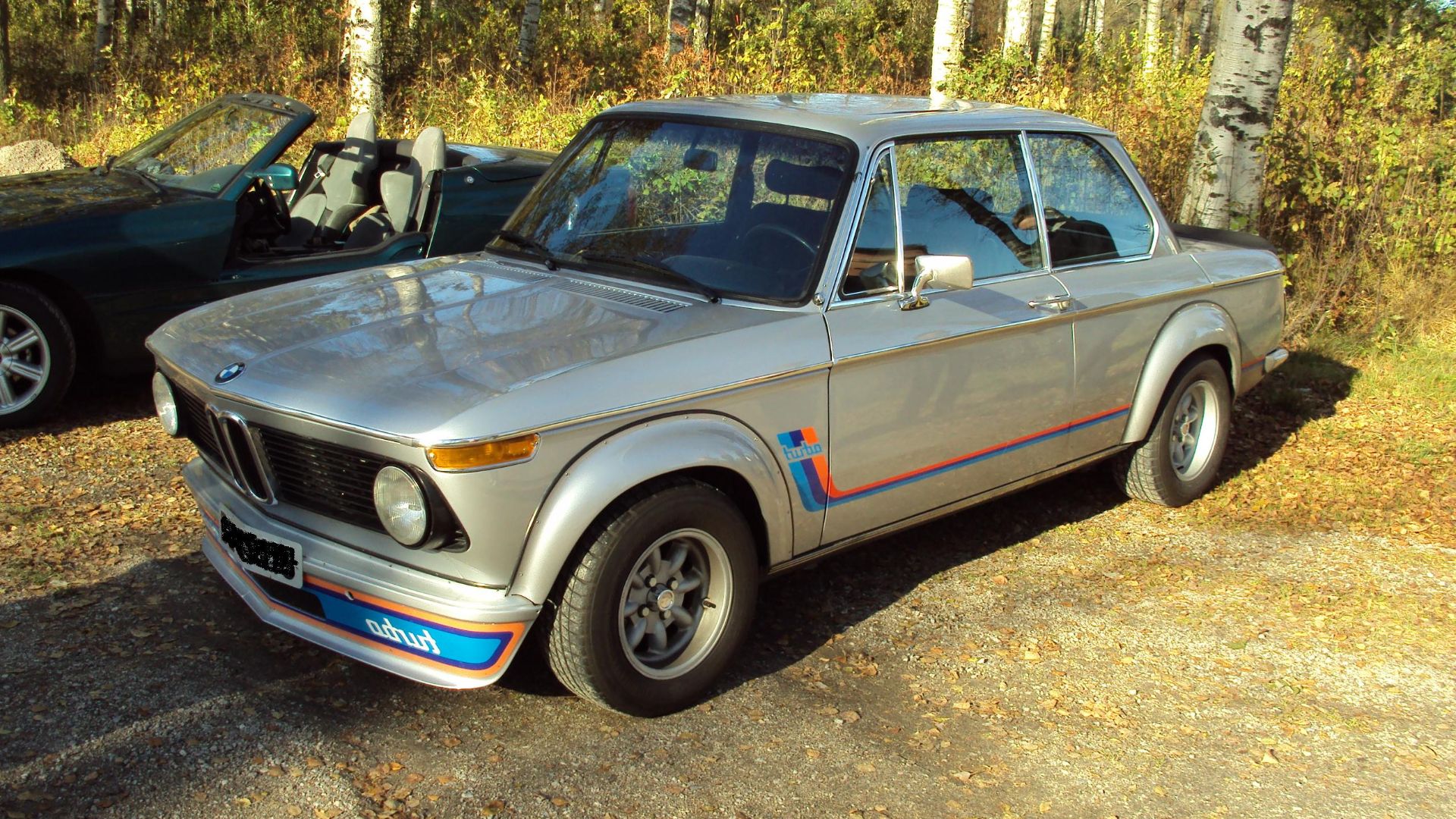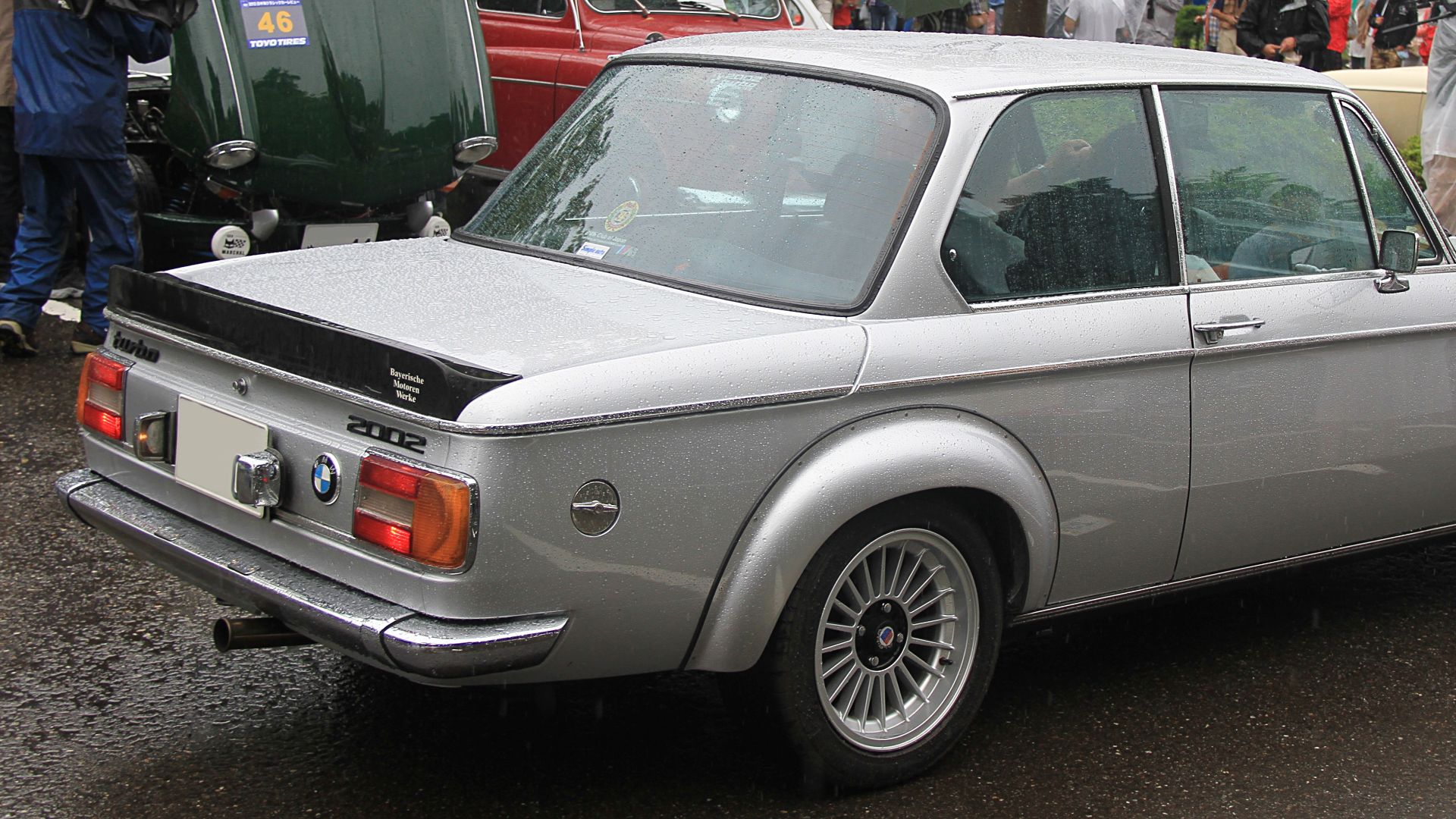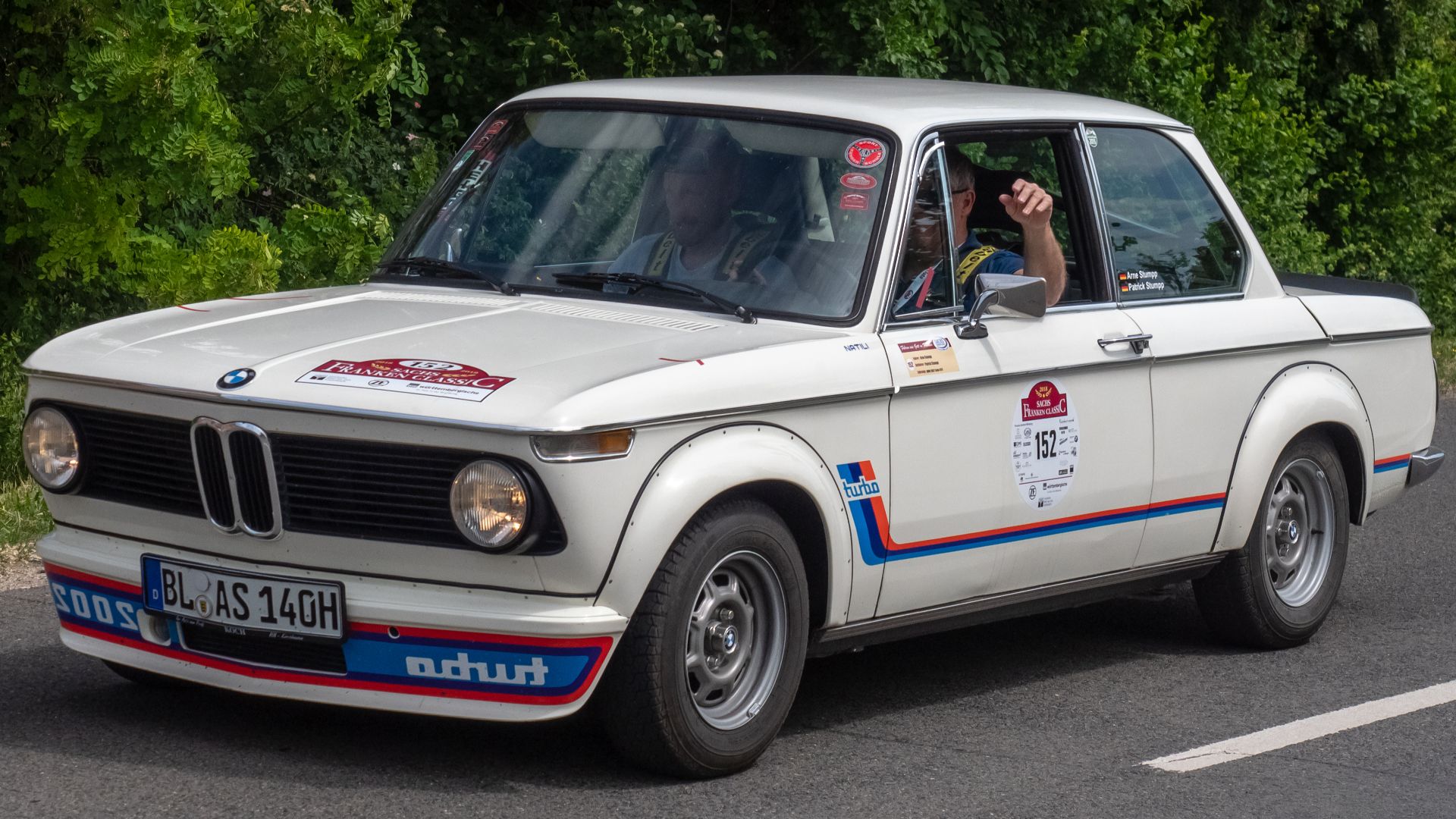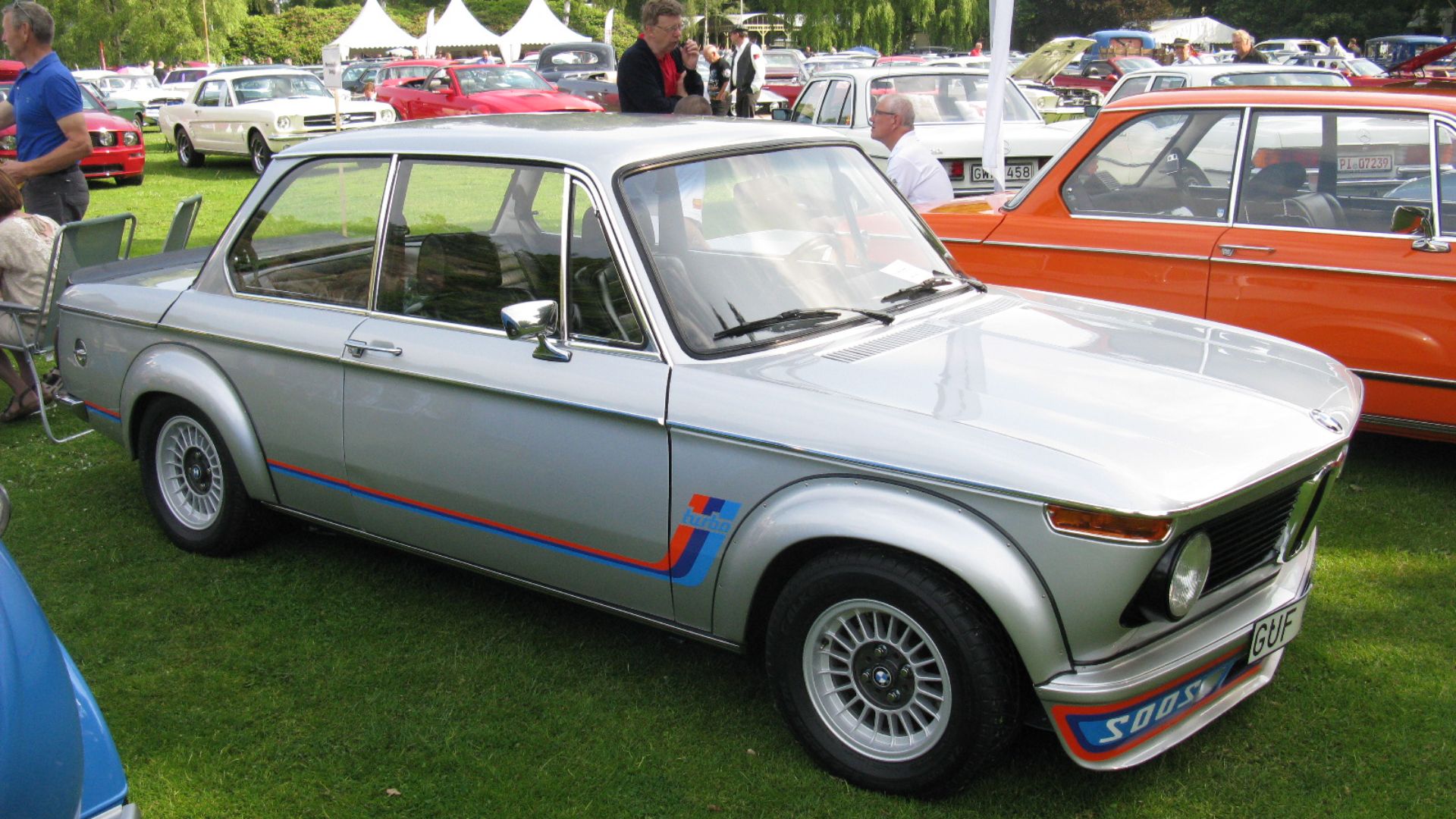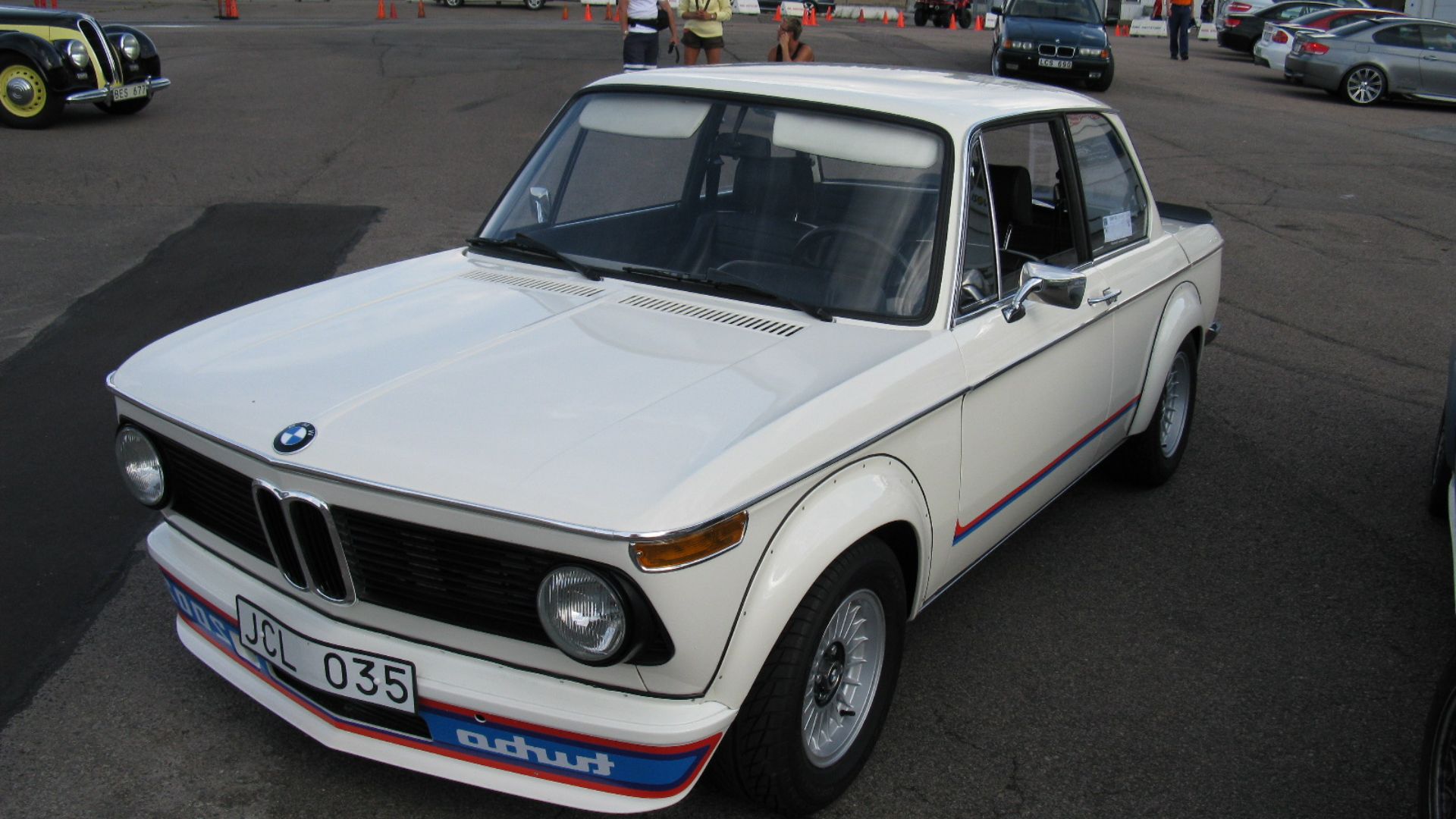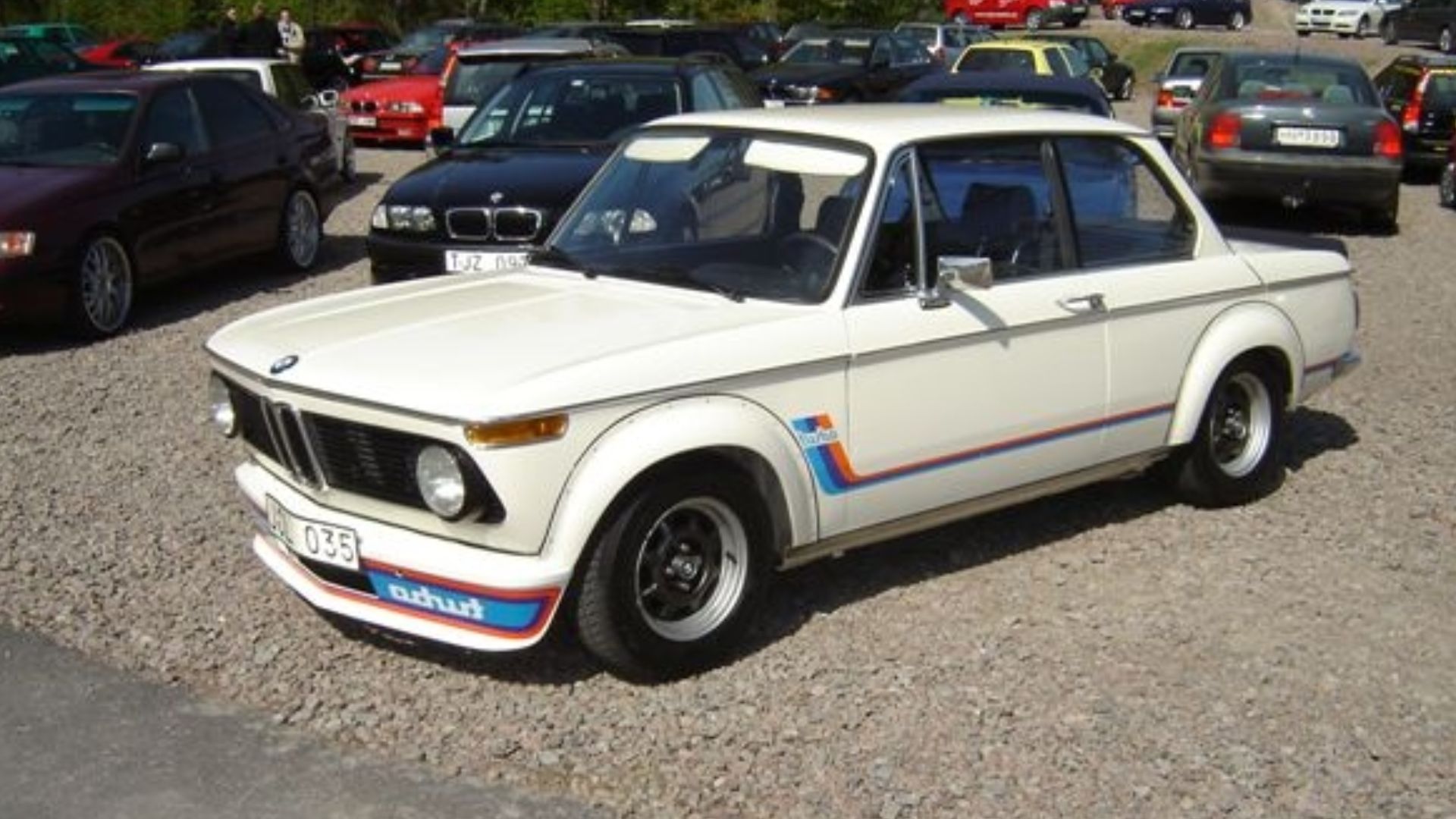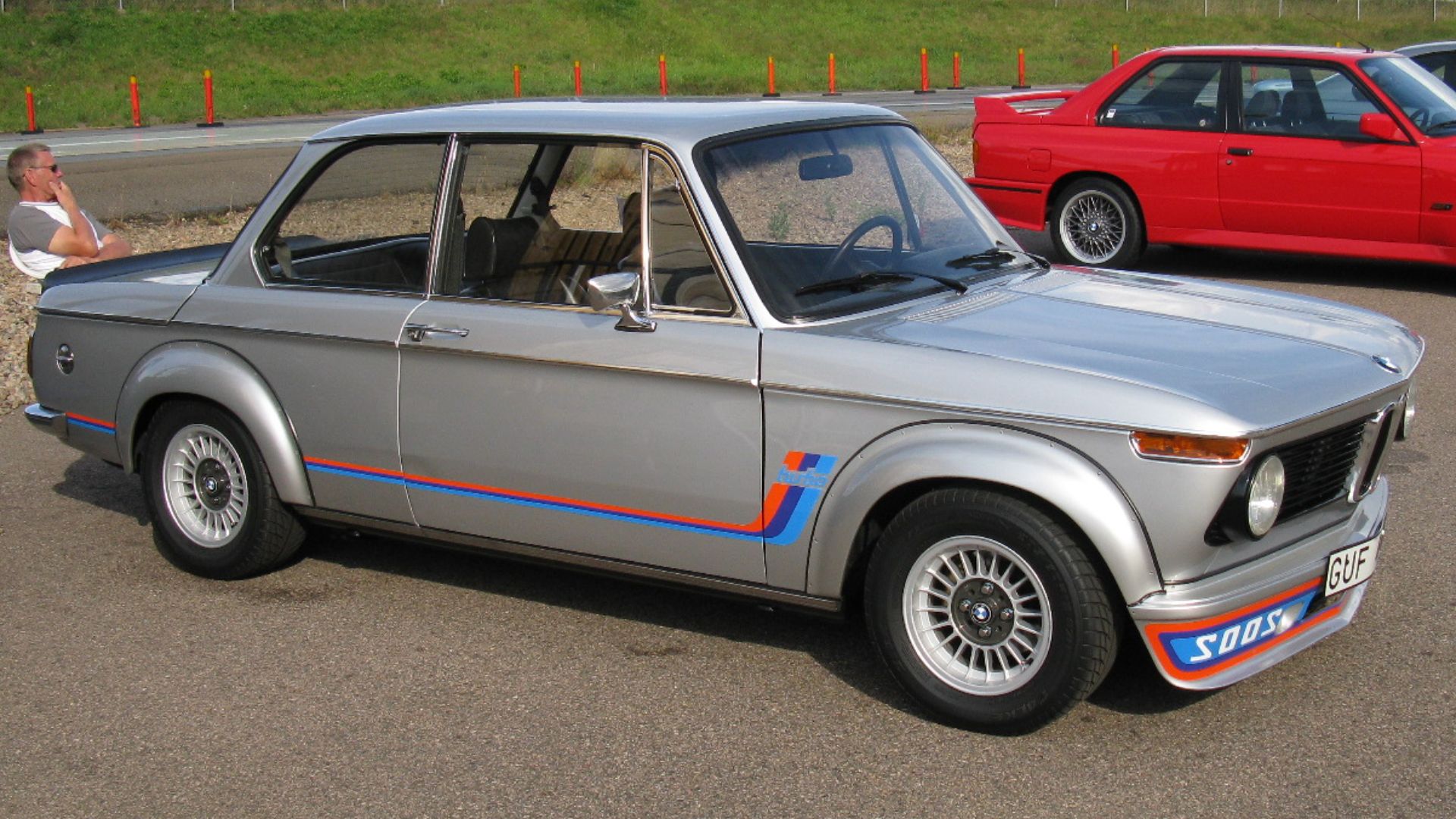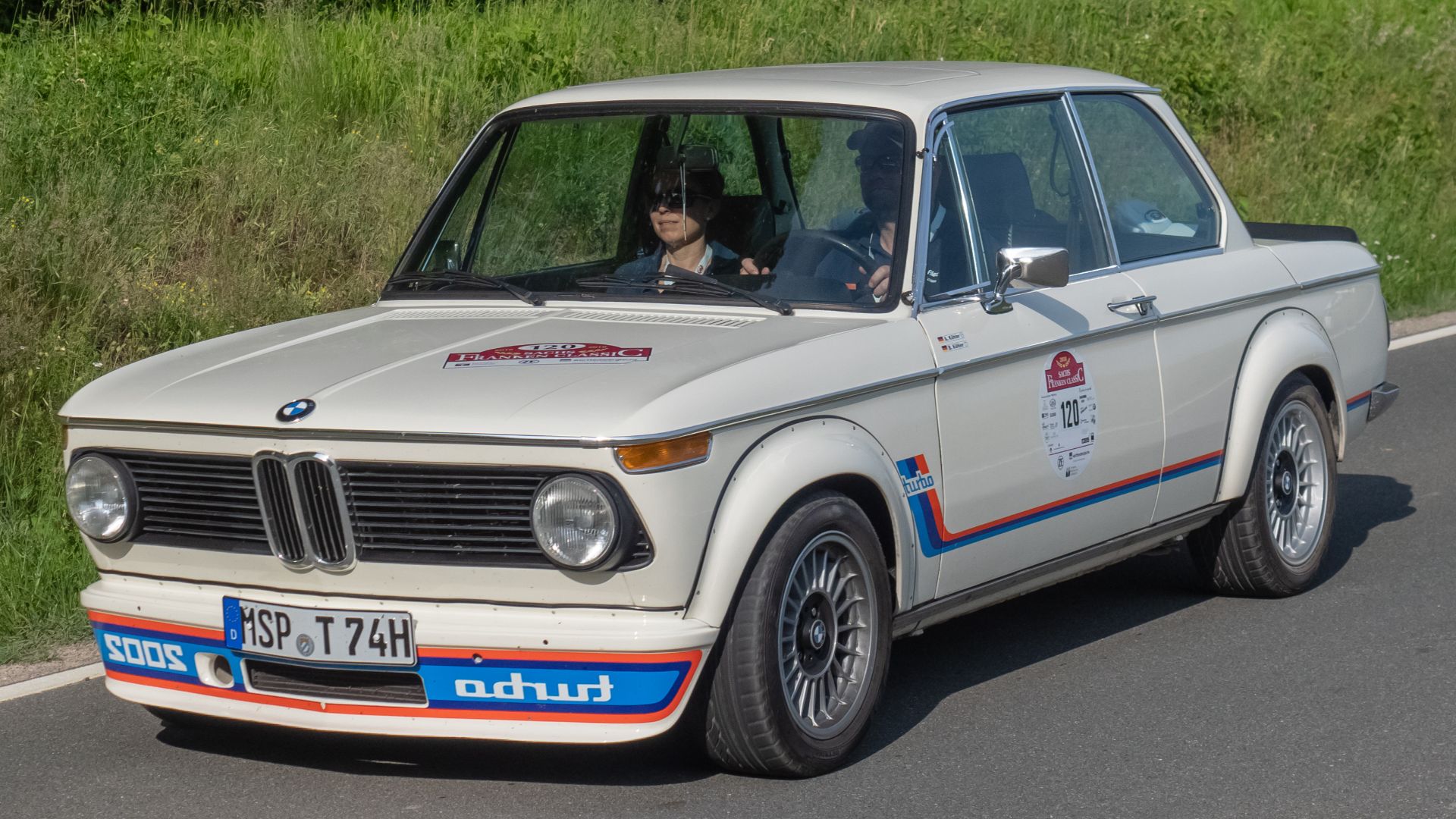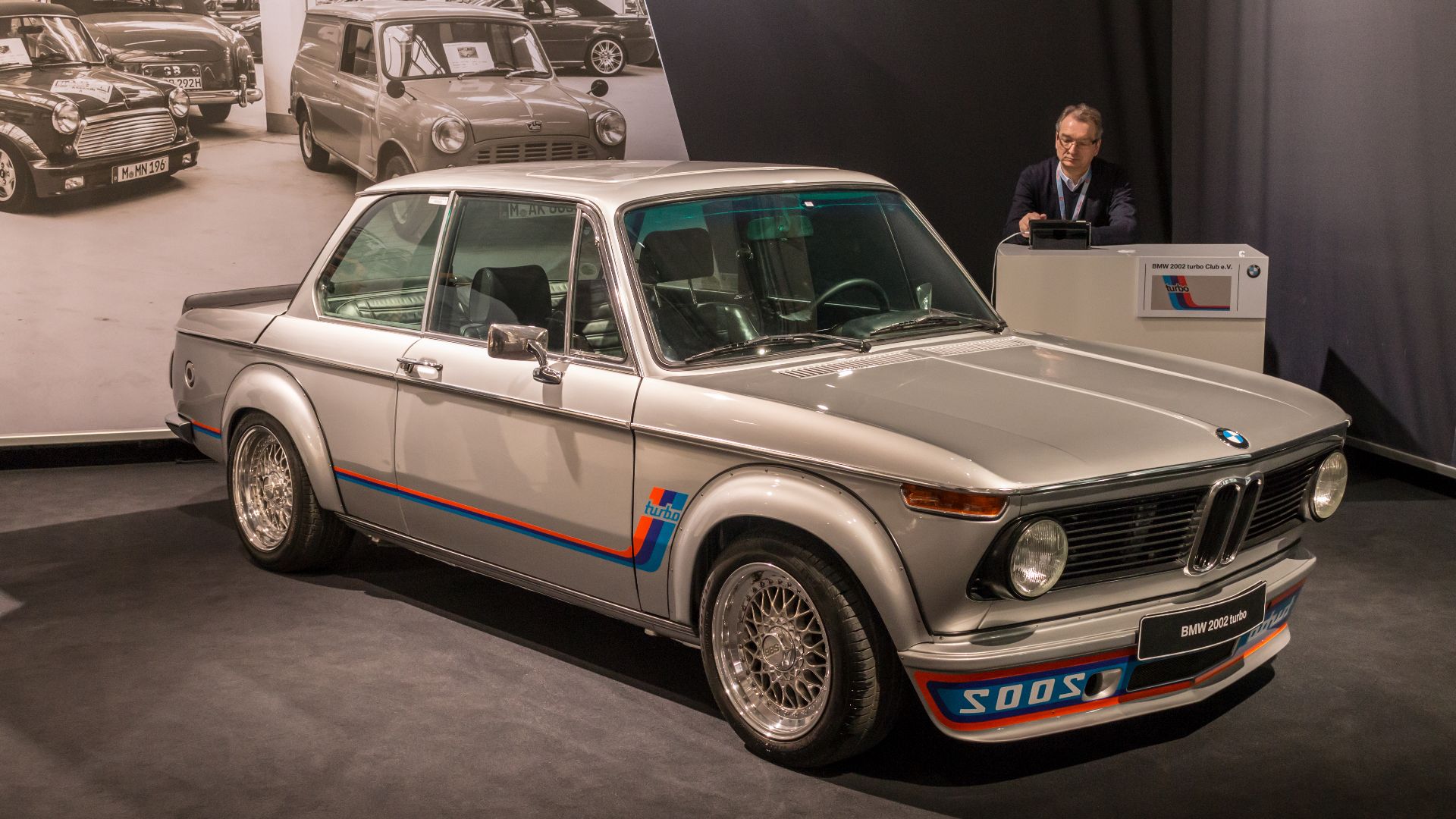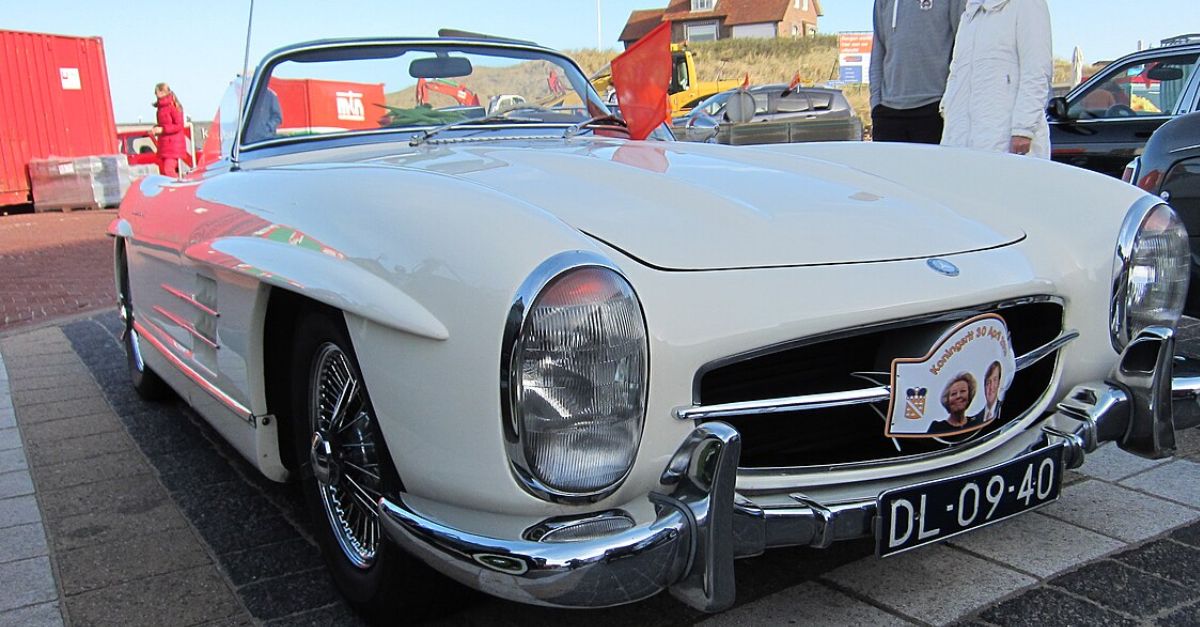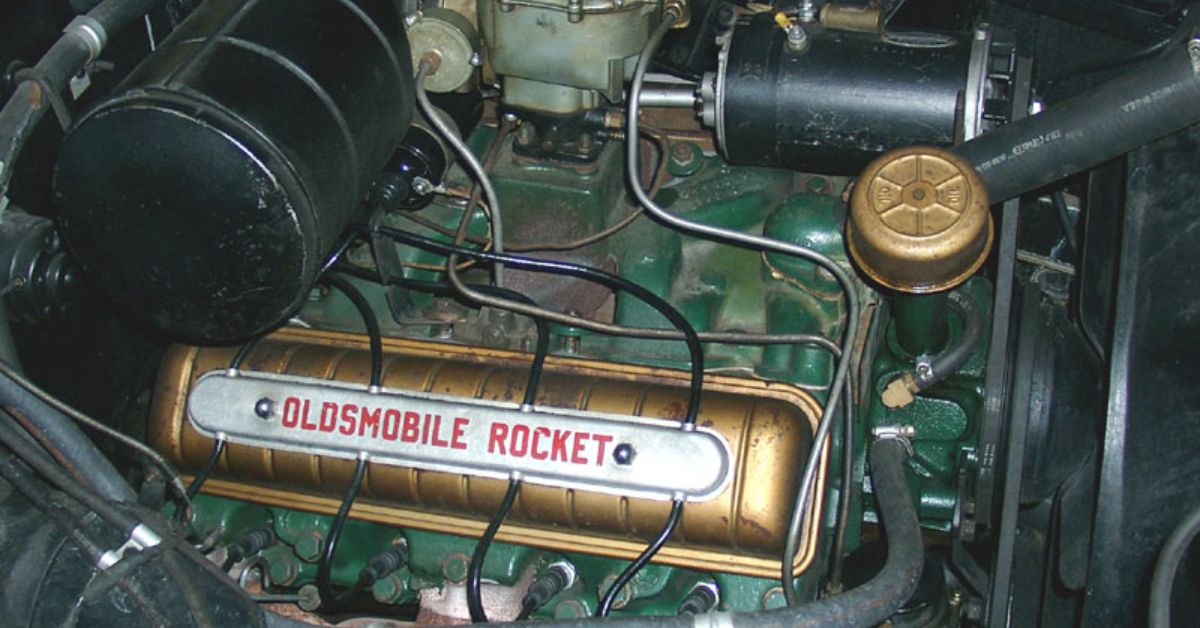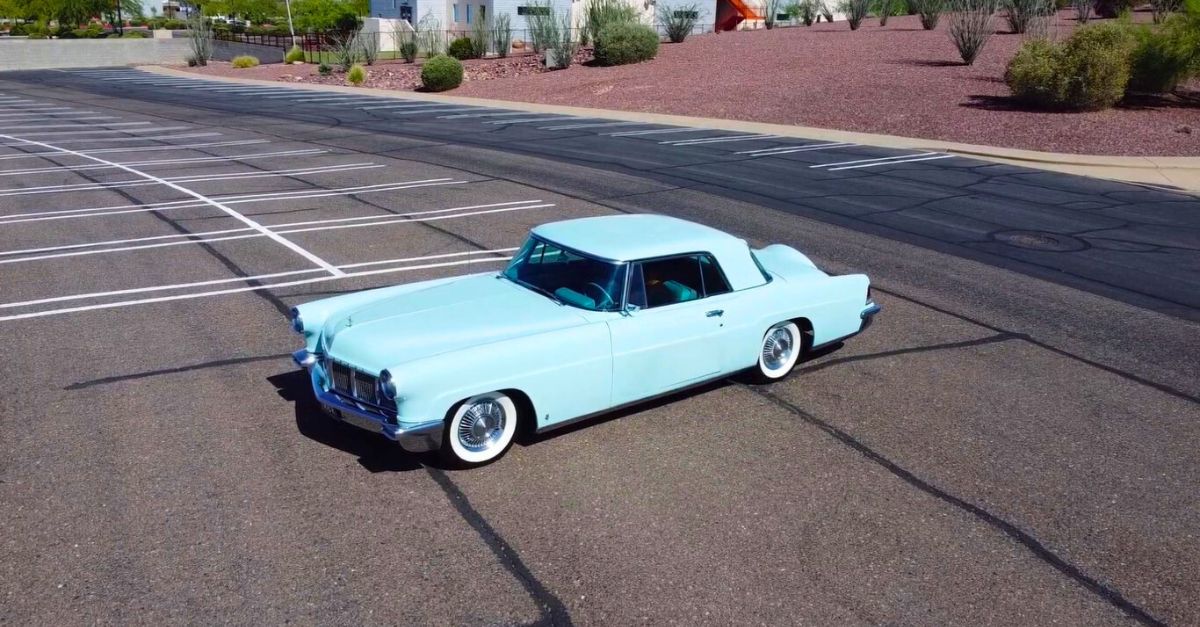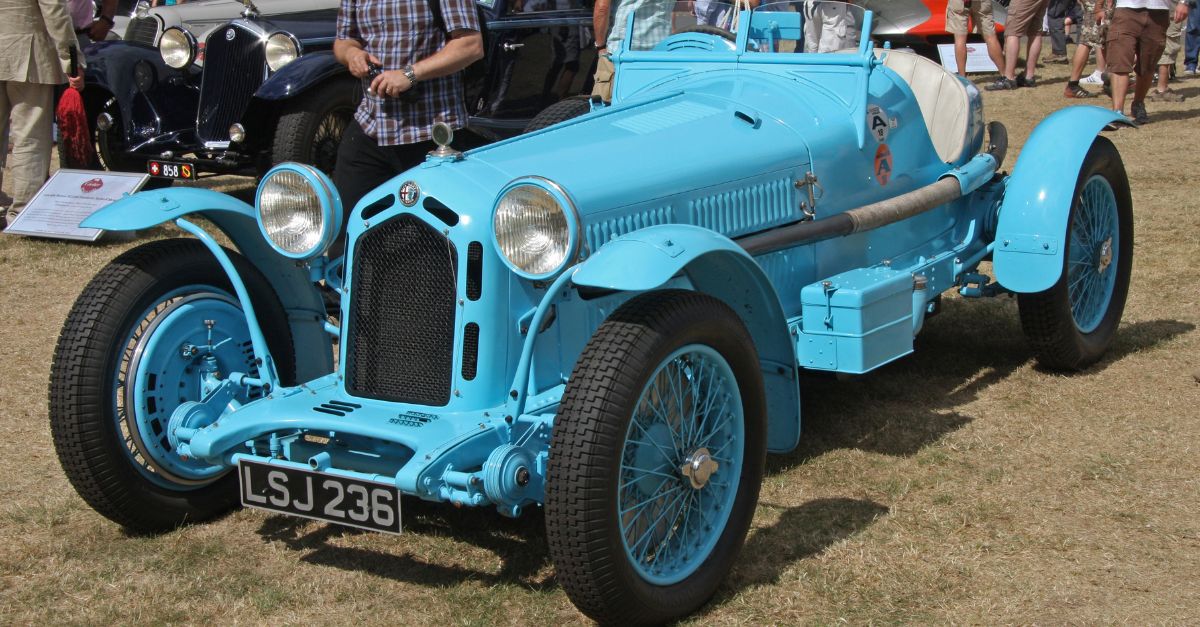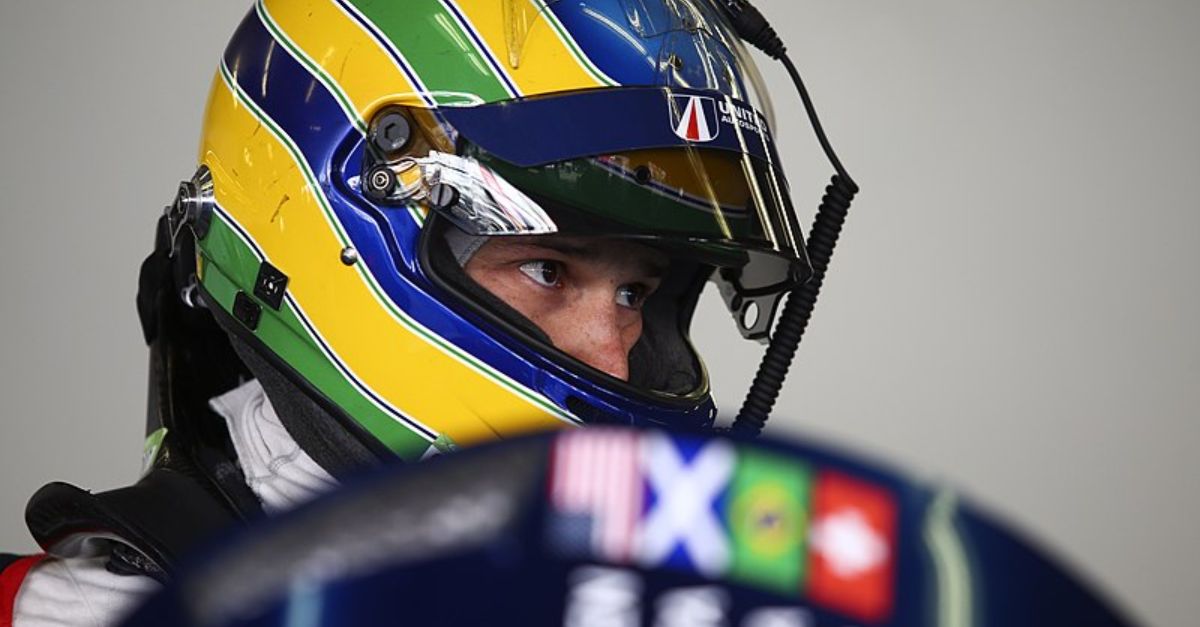Small Car Big Impact
Cars come and go. But some burn themselves into automotive history forever. This beast is that one. As a boxy little troublemaker, the car shocked the world when it roared onto the streets.

Origins Of The 02 Series
BMW's 02 Series began with the 1600-2 in 1966. It was a shortened, sportier two-door version of their New Class sedans. The 2002 variant soon entered in 1968 and established BMW's reputation for affordable performance vehicles.
Lineup Expansion
The 02 Series expanded to include several variants, including the 1600-2/1602, 1600 TI, 1802, and 2002. The car came in a few different styles, like the regular two-door sedan, the Baur cabriolet, and the three-door Touring hatchback that appeared in 1971.
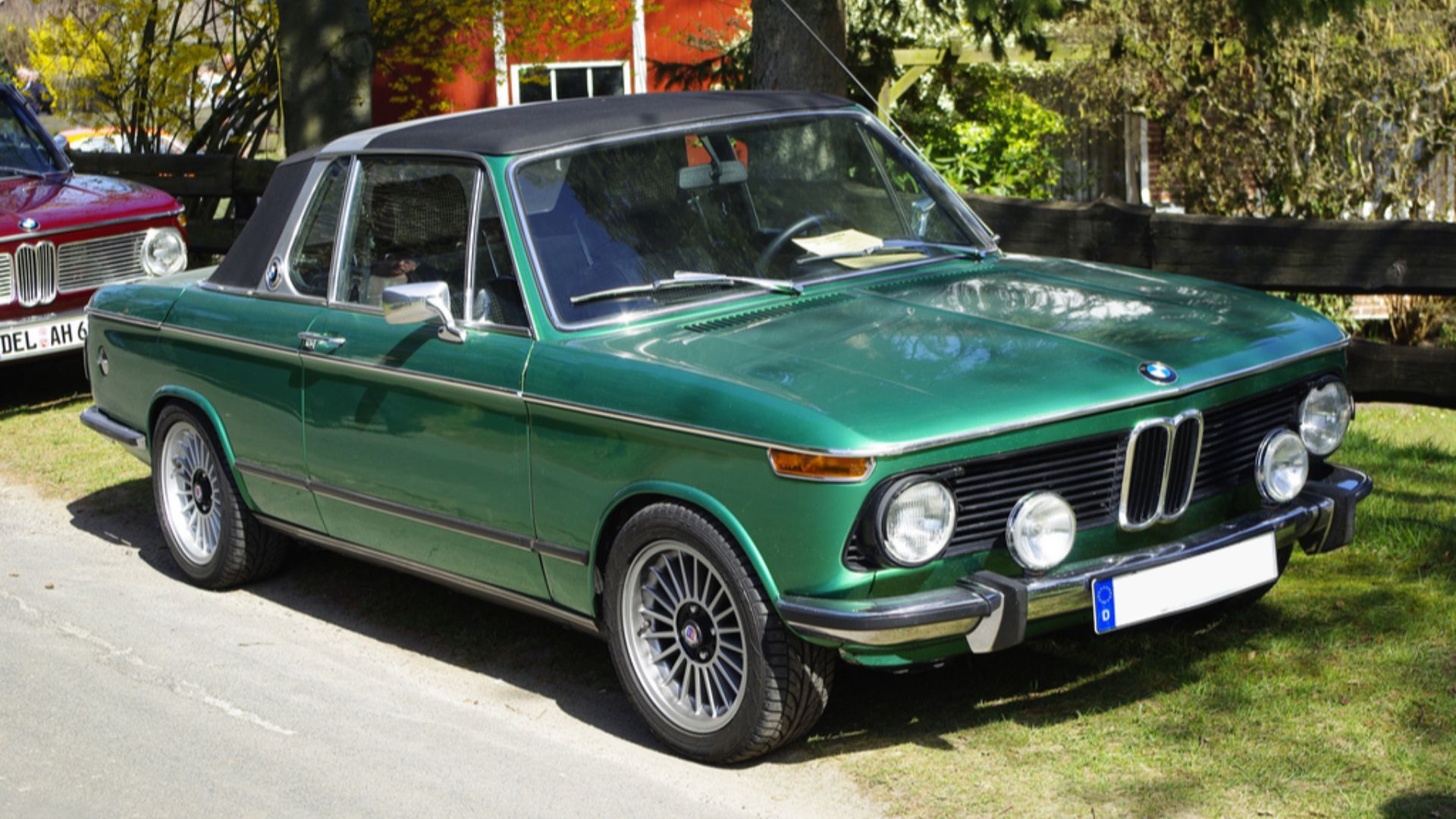 OlliFoolish, Wikimedia Commons
OlliFoolish, Wikimedia Commons
Birth Of The 2002
The story of the 2002 starts with BMW executives Helmut Werner Bonsch and Alex von Falkenhausen. Both of them decided to upgrade their personal 1600-2 cars by installing a 2.0-liter engine. This led them to propose the production of a two-liter version of the 1600 2 to BMW's board.
Birth Of The 2002 (Cont.)
Around the same time, Max Hoffman, BMW's sole distributor in the US from 1962 to 1975, was pushing for a sportier version of the 02 series that could appeal to American tastes. Hoffman's efforts aligned with BMW's internal developments, contributing to the 2002 evolution.
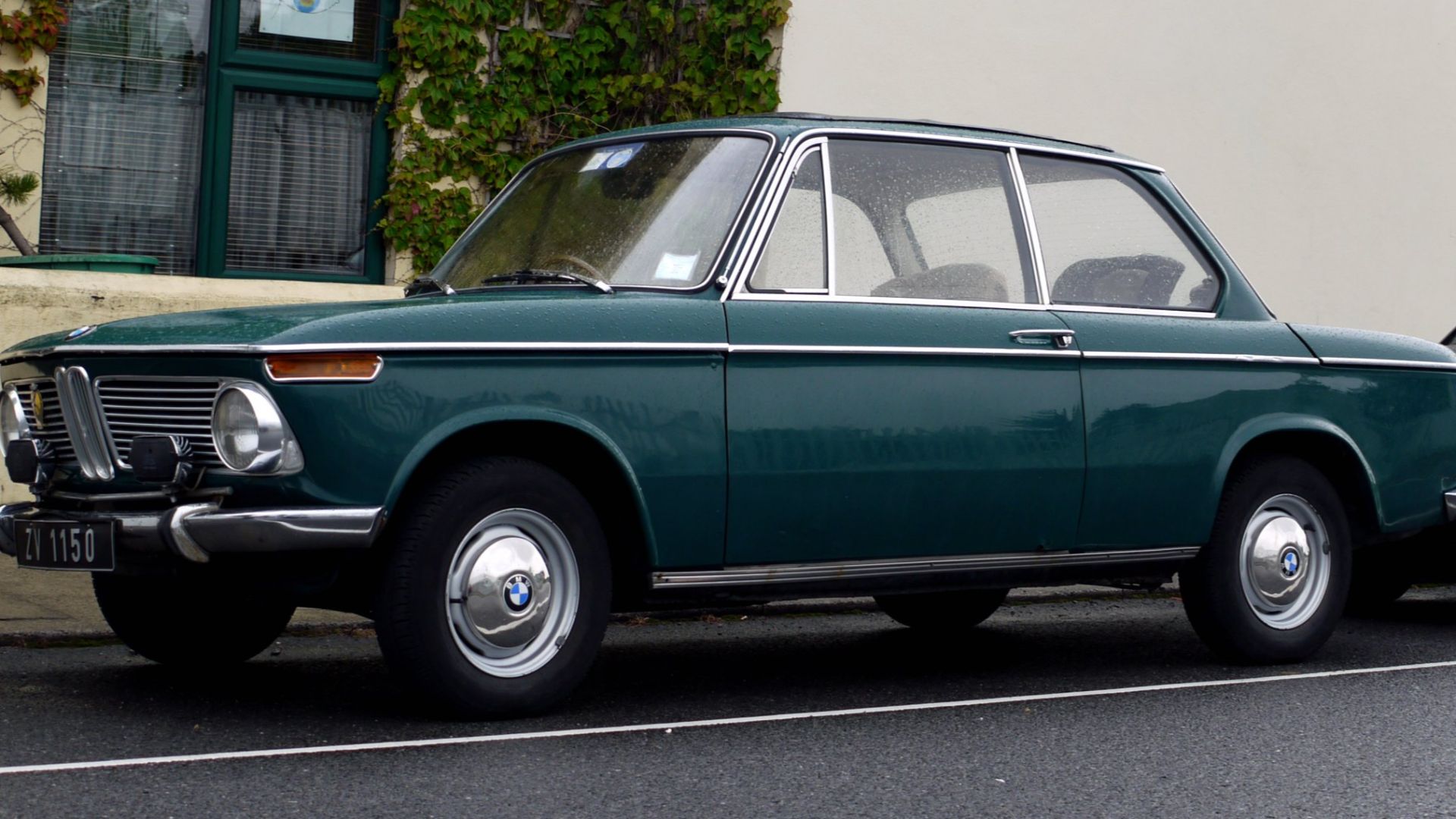 Mic from Reading - Berkshire, United Kingdom, Wikimedia Commons
Mic from Reading - Berkshire, United Kingdom, Wikimedia Commons
Racing Heritage Development
Before the Turbo version came out, the 2002 platform had already made a name for itself in racing. Back in 1969, Dieter Quester and Hubert Hahne scored a win at the European Touring Car Race at Brand's Hatch in a factory-built 2002 TIK race car.
 Michele Borioli, Wikimedia Commons
Michele Borioli, Wikimedia Commons
Rally Competition Success
The 2002 platform was a beast in rally racing. A 2002 TI driven by Sobieslaw Zasada took home the trophy in the 1971 European Rally Championship, beating out tough competitors like Sandro Munari in a Lancia and Jean-Pierre Nicolas in an Alpine-Renault.
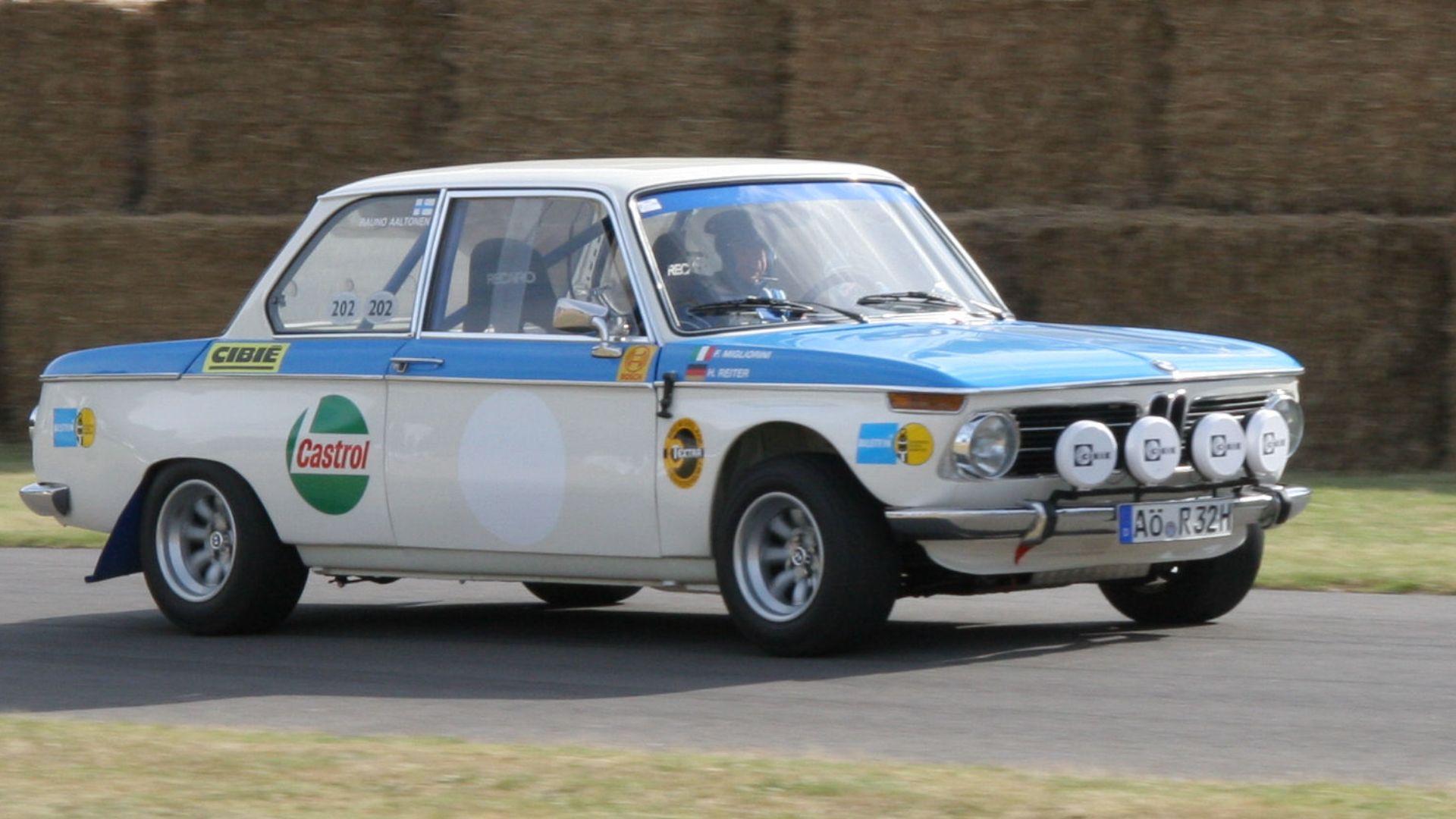 Brian Snelson from Hockley, Essex, England, Wikimedia Commons
Brian Snelson from Hockley, Essex, England, Wikimedia Commons
Concurrent Electric Experiments
When BMW was working on this car, they were also dabbling with the 1602 Elektro, which was an electric vehicle used during the 1972 Munich Olympics. This side project showed how interested the company was in exploring different ways to power their vehicles.
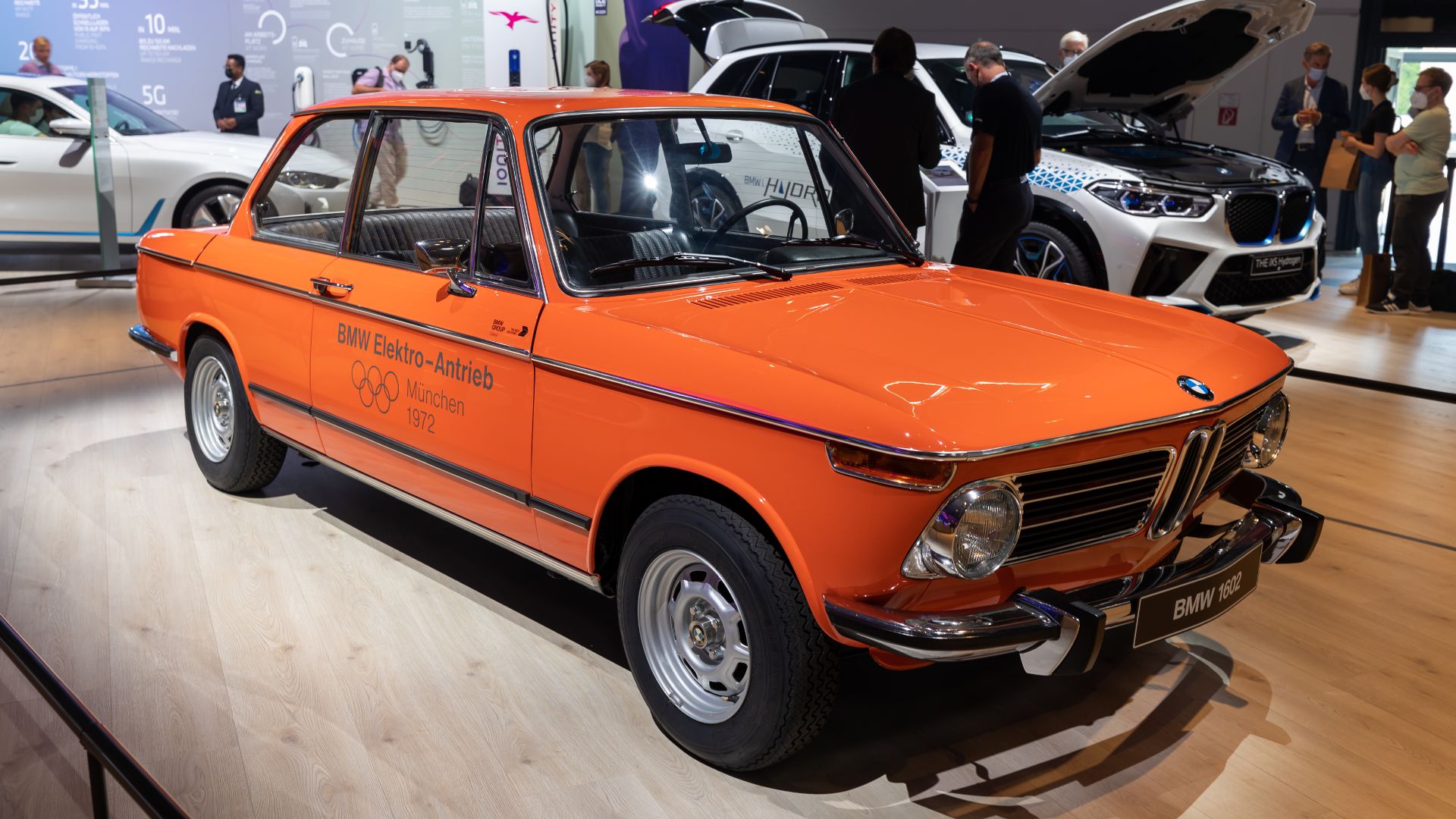 Matti Blume, Wikimedia Commons
Matti Blume, Wikimedia Commons
Uruguay Connection
The BMW 2002 was assembled under license in Uruguay by Convex, a company founded by Spanish-born businessman Jose Arijon. This assembly took place from the 1960s to the early 1990s, with models including the 1600 and 2002 being produced locally.
Uruguay Connection (Cont.)
It achieved significant success in Uruguayan motorsports, winning the Gran Premio 19 Capitales rally in 1971 and 1973. This rally was a major event in South American motorsports. Additionally, it also won the 6 Hours of El Pinar circuit race in 1972.
 How to Best Enjoy a BMW 2002? On the Race Track! by Classic Motorsports
How to Best Enjoy a BMW 2002? On the Race Track! by Classic Motorsports
Trans Am Series Competition
Competing in the Trans Am Series under-two-liter class, the BMW 2002 had limited success because Alfa Romeo, Porsche, and Datsun dominated the field. This team won just two races in 1970, at Bryar and Bridgehampton, during the heyday of Trans Am (1966–1972).
Early Turbocharging Concept
BMW engineers started playing around with turbocharging the M10 engine back in 1972. The first prototypes looked like they could truly boost power, but they had some reliability and drivability problems that needed a lot of extra work to fix.
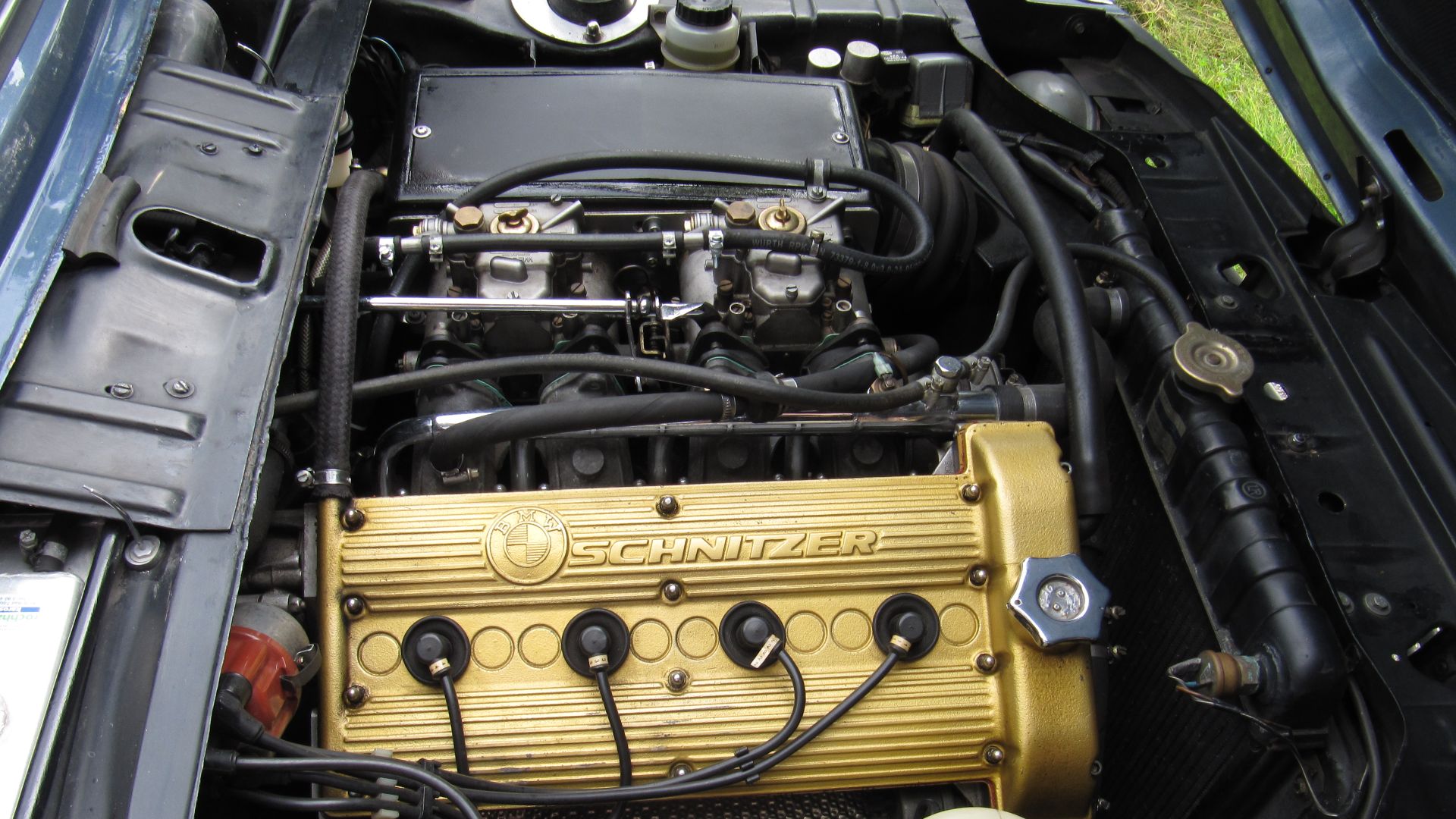 Buschtrommler, Wikimedia Commons
Buschtrommler, Wikimedia Commons
Frankfurt Motor Show Debut
The BMW 2002 Turbo made a dramatic debut at the 1973 Frankfurt Motor Show, marking it as Europe's first turbocharged production car. This event was significant not only for its technological innovation but also for its timing, as it coincided with the onset of the 1973 oil crisis.
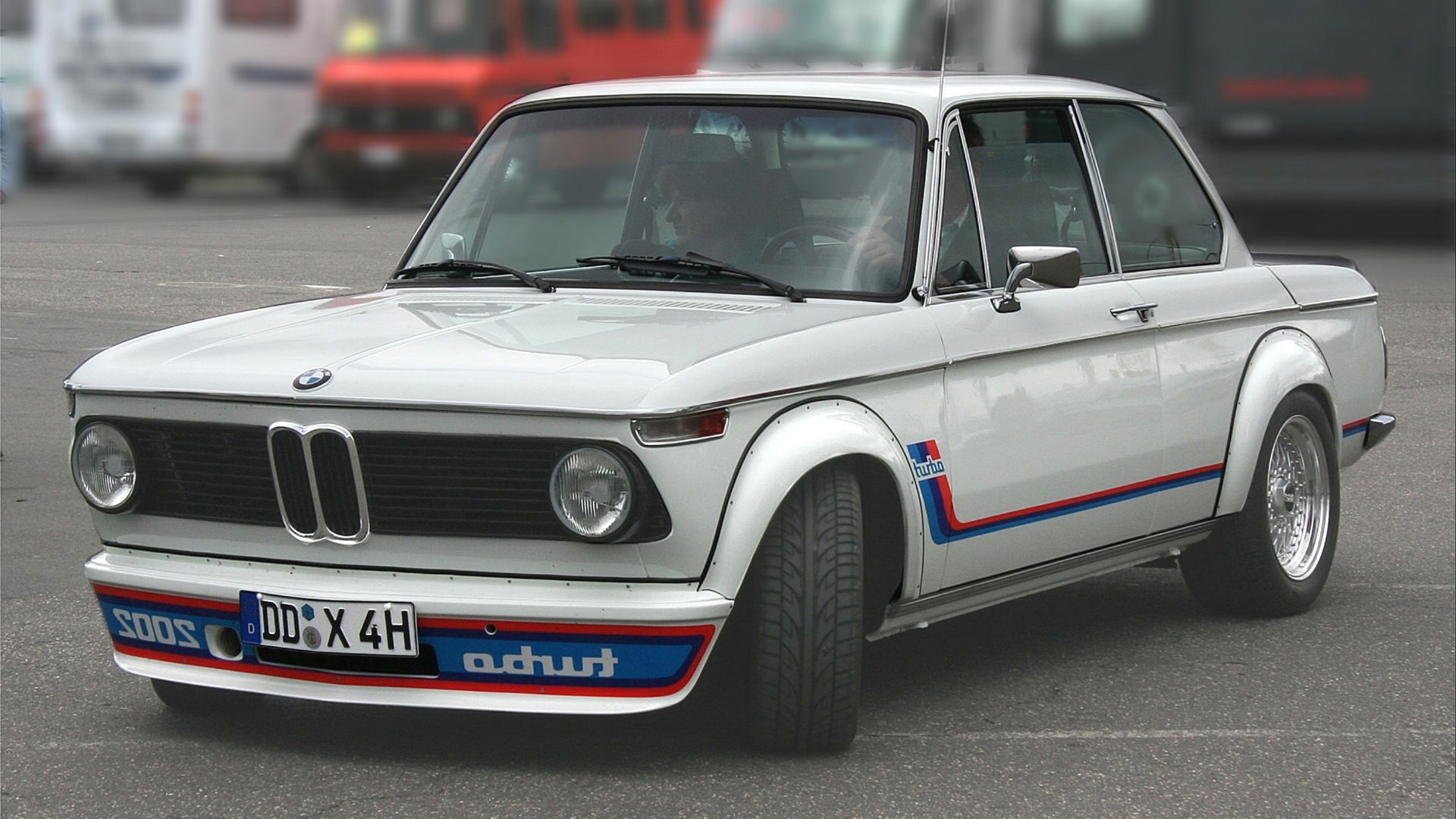 Spurzem - Lothar Spurzem, Wikimedia Commons
Spurzem - Lothar Spurzem, Wikimedia Commons
Controversial Front Script
The show car had "2002 turbo" printed in reverse on the front spoiler, so drivers in front would get the hint to move over. This eye-catching detail soon caused great controversy during the fuel crisis as it was perceived as aggressive and inappropriate, given the environmental concerns.
Oil Crisis Challenge
This piece came out during the tough times of the 1973 oil crisis, right after OPEC cut exports because of the Yom Kippur War. In Germany, they put a 100 km/h speed limit on the Autobahn and had driving bans on weekends, making things difficult for the market.
Production Timeline
Manufacturing of the 2002 Turbo kicked off in 1973 and wrapped up in June 1975. Every car was put together on the main BMW production line in Munich, but it took a bit longer to assemble because of some special parts compared to the regular 02 models.
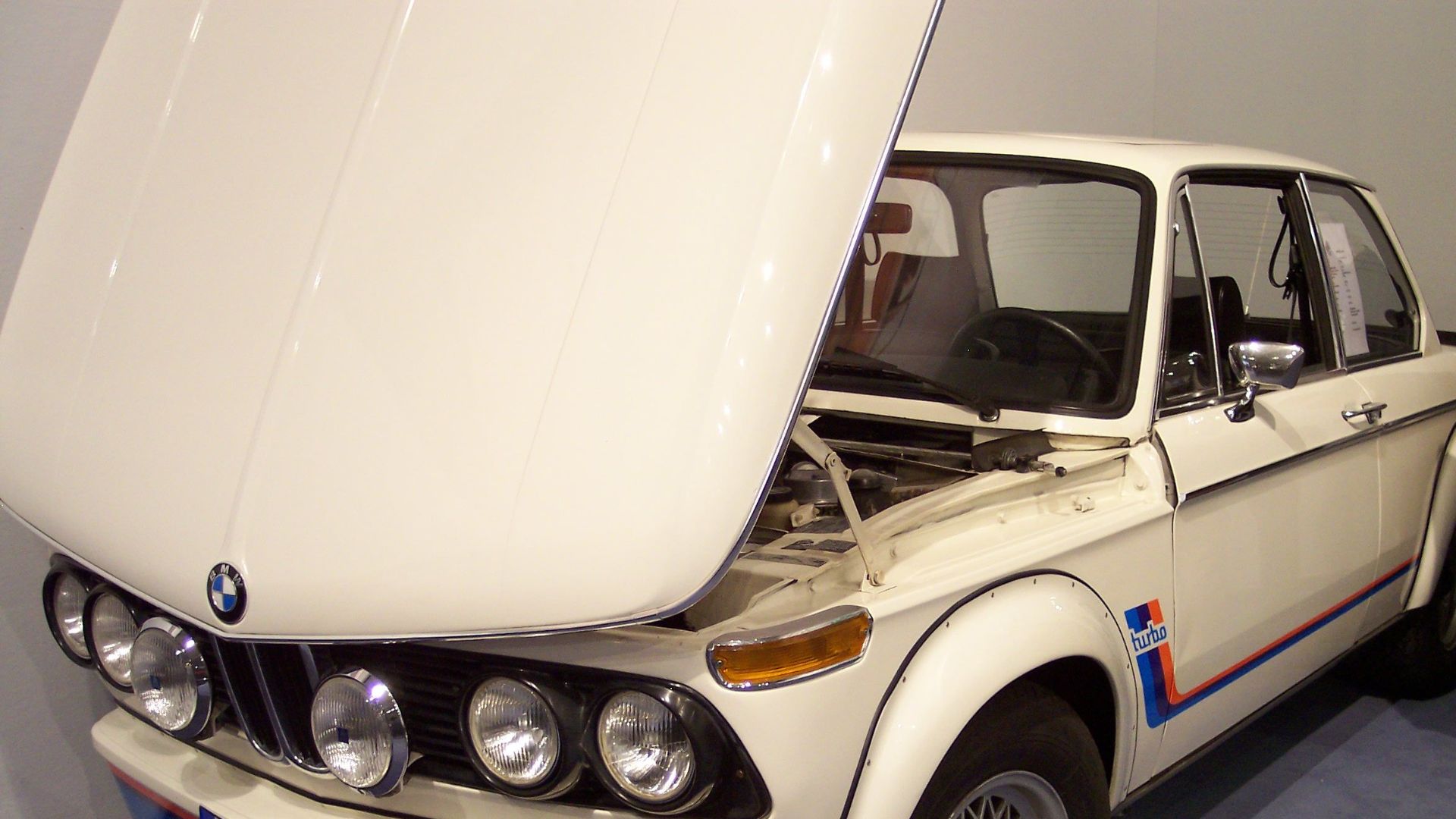 Stahlkocher, Wikimedia Commons
Stahlkocher, Wikimedia Commons
Engine Lineage
The M10 four-cylinder engine in the 2002 Turbo was super reliable and had been used in a bunch of other BMW models. This 1,990cc engine laid the groundwork for future racing engines, even the ones that won championships in Formula 1.
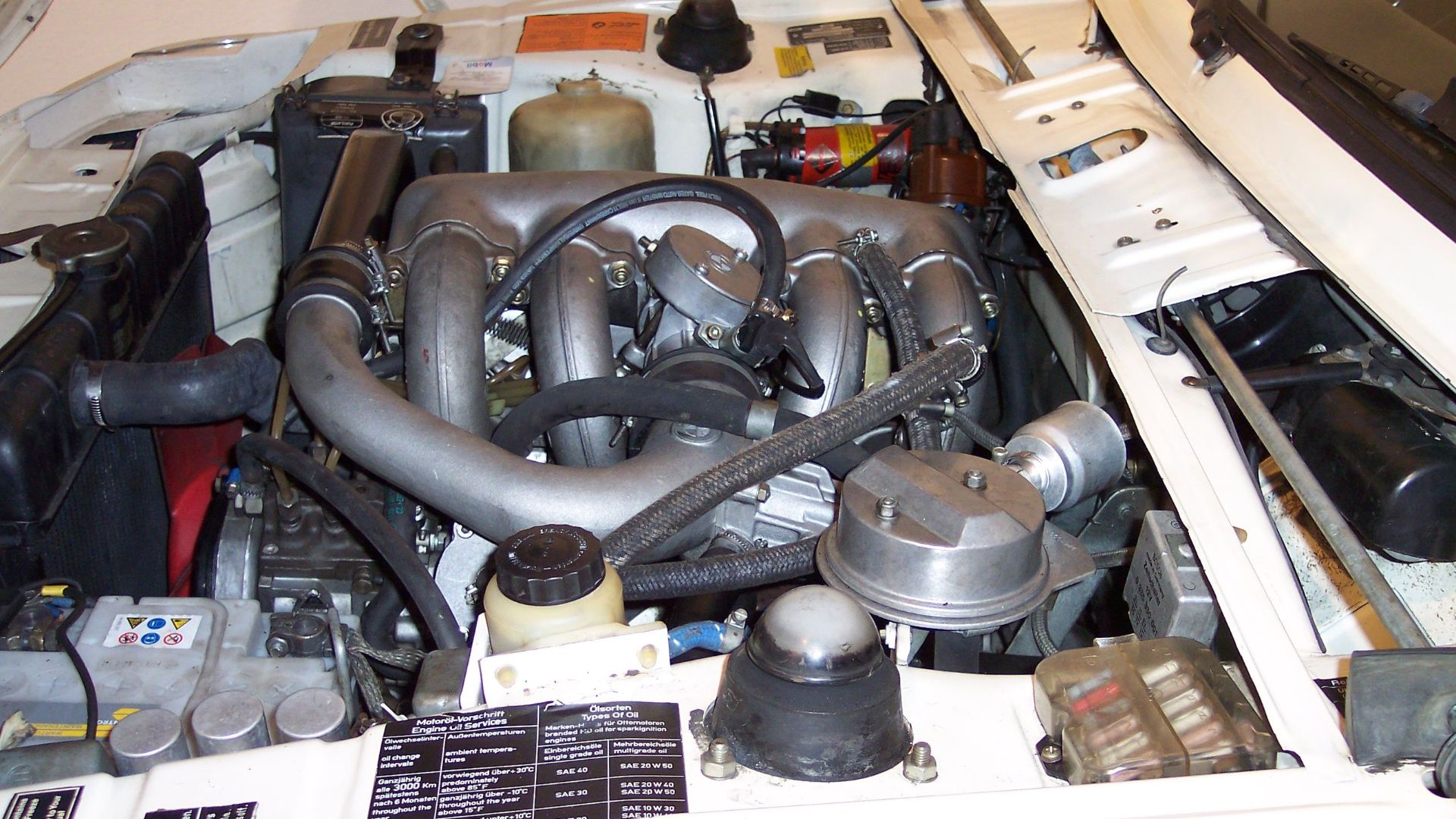 Stahlkocher, Wikimedia Commons
Stahlkocher, Wikimedia Commons
Advanced Engineering
The company made use of a KKK (Kuhnle, Kopp & Kausch) turbocharger paired with their trusty M10 inline-four engine. Engineers tweaked the cylinder head and dropped the compression down to 6.9:1 from 9:5:1 to avoid any engine knock issues.
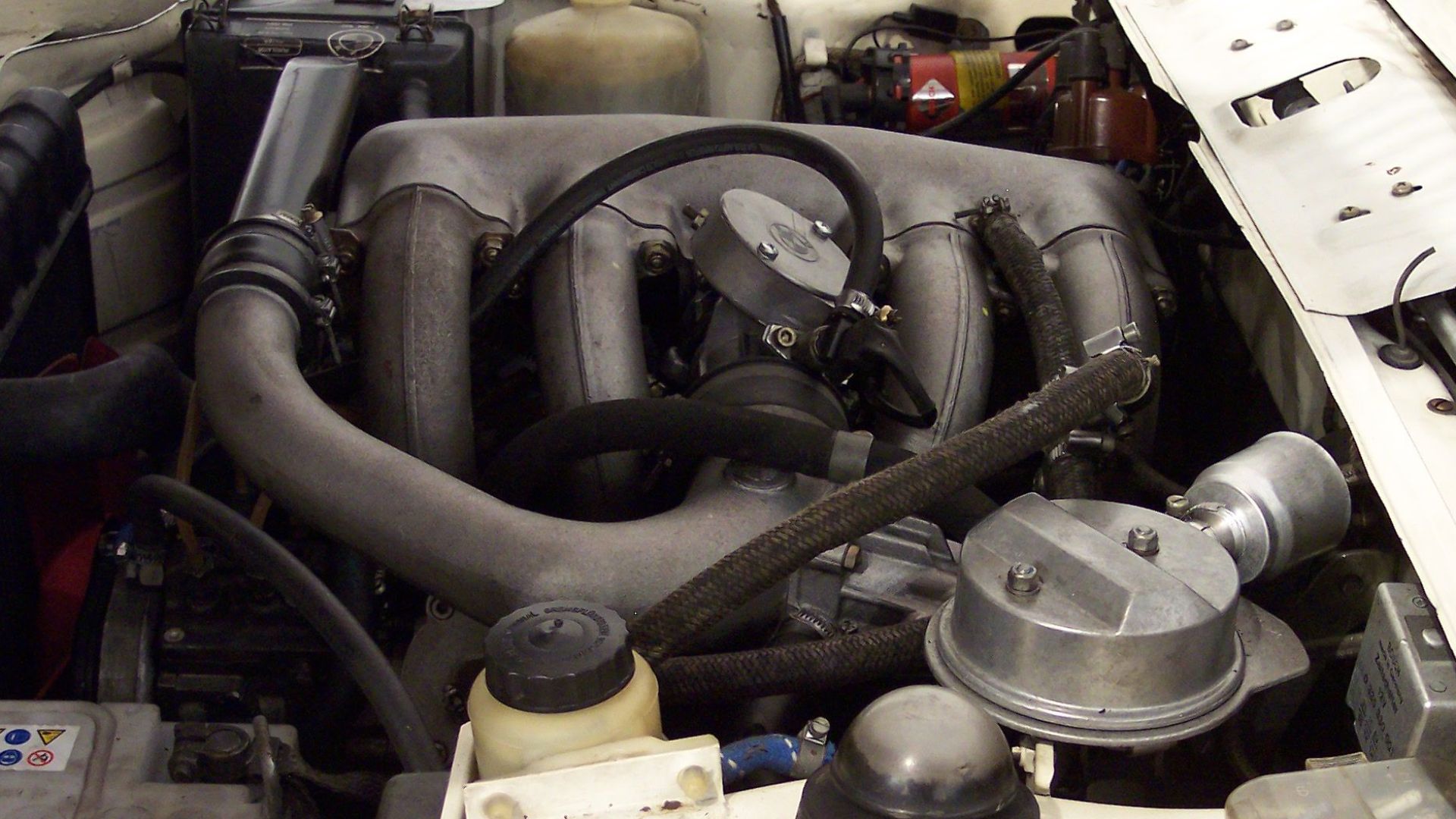 Stahlkocher, Wikimedia Commons
Stahlkocher, Wikimedia Commons
Turbocharger Configuration
This turbocharger was installed low down and attached to the exhaust manifold, being compact. It had a straightforward pipe that linked it to the intake side. As per reports, it operated at a boost pressure of approximately 7 psi (0.48 bar).
Mechanical Fuel Injection
Using the Kugelfischer mechanical fuel injection system with integrated boost enrichment and altitude correction, this beast showed off an advanced fuel injection technology for its time. It provided precise fuel metering based on engine load and speed, similar to the system used in the 2002 tii.
 How To Install A Mechanical Fuel Pump Into A BMW 2002TII | Wheeler Dealers by Wheeler Dealers
How To Install A Mechanical Fuel Pump Into A BMW 2002TII | Wheeler Dealers by Wheeler Dealers
Engine Power Density
It was set up with a 2.0-liter inline-four engine, producing 170 horsepower (125 kW) at 5,800 RPM. This resulted in a power density of approximately 85.4 horsepower per liter. The achievement of such high power density in 1973 was pretty remarkable.
Power Statistics
The turbocharged 2.0-liter engine produced 170 hp at 5,800 rpm and 240 Nm (177 lb-ft) of torque at 4,000 rpm. This was quite an increase from the 130 horsepower of the 2002 tii. The use of a KKK turbocharger added 40 horsepower to the base engine.
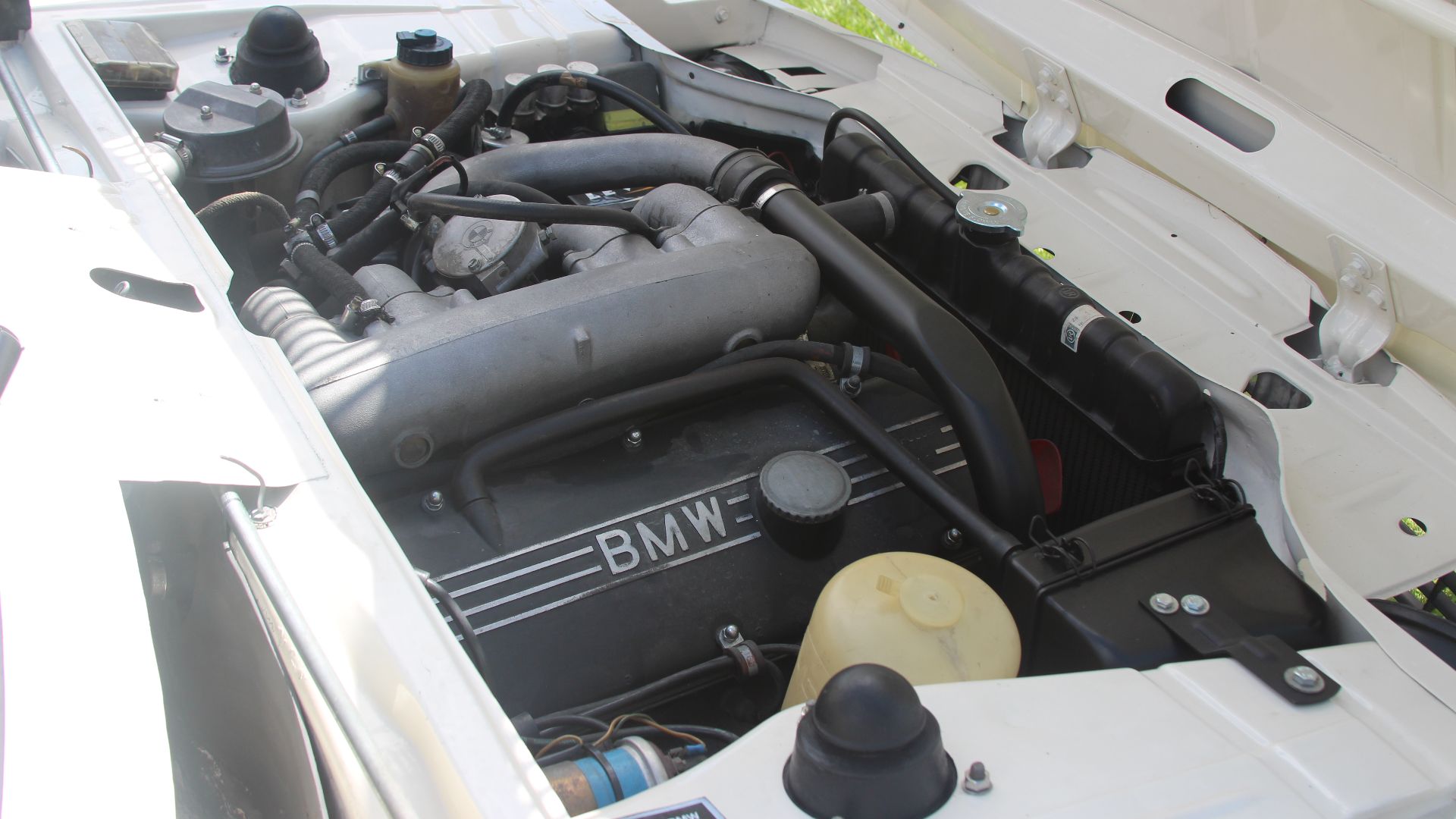 dave_7 from Canada, Wikimedia Commons
dave_7 from Canada, Wikimedia Commons
Engine Cooling Requirements
Additional cooling was necessary for the turbocharged engine. Hence, the 2002 Turbo displayed a larger radiator compared to other models in the 02 series. This was necessary to dissipate the additional heat produced, ensuring that the engine remained within safe operating temperatures even under boost conditions.
 PROJECT 1968 BMW 2002 PH02E01 - Radiator by Spurious Pseudo
PROJECT 1968 BMW 2002 PH02E01 - Radiator by Spurious Pseudo
Engine Cooling Requirements (Cont.)
An oil cooler was also added to help keep the engine's lubrication system cool. The oil helps cool the turbocharger itself, which can reach extremely high temperatures due to its proximity to exhaust gases. This was critical for maintaining the longevity and performance of the engine.
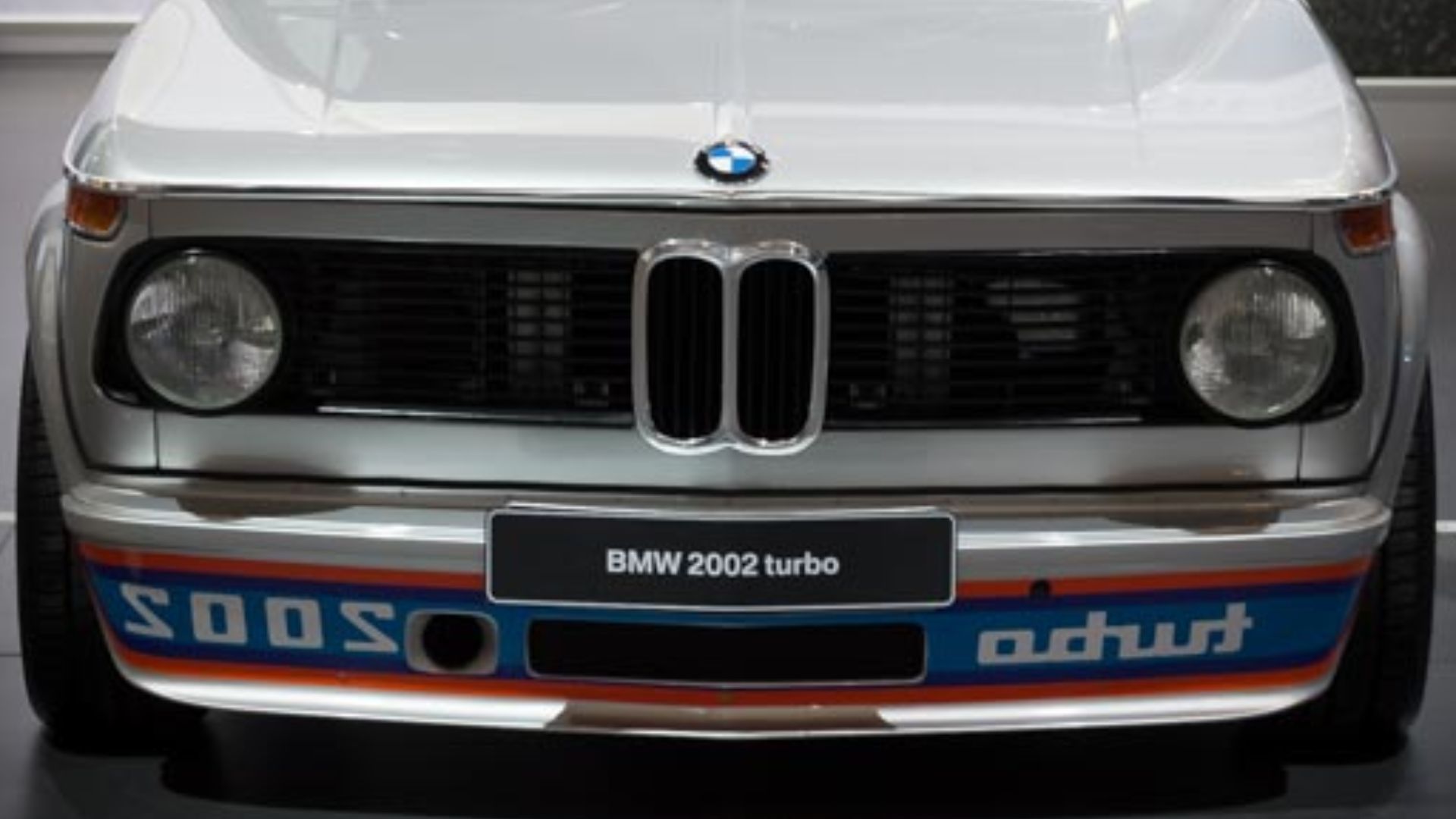 EnglaenderUN, Wikimedia Commons
EnglaenderUN, Wikimedia Commons
Transmission Options
A standard four-speed manual transmission was what the drive came with, but if you wanted something a bit sportier, there was an optional five-speed manual. Both transmissions were paired with a 3.36:1 limited-slip differential, although a shorter 3.45:1 ratio was available.
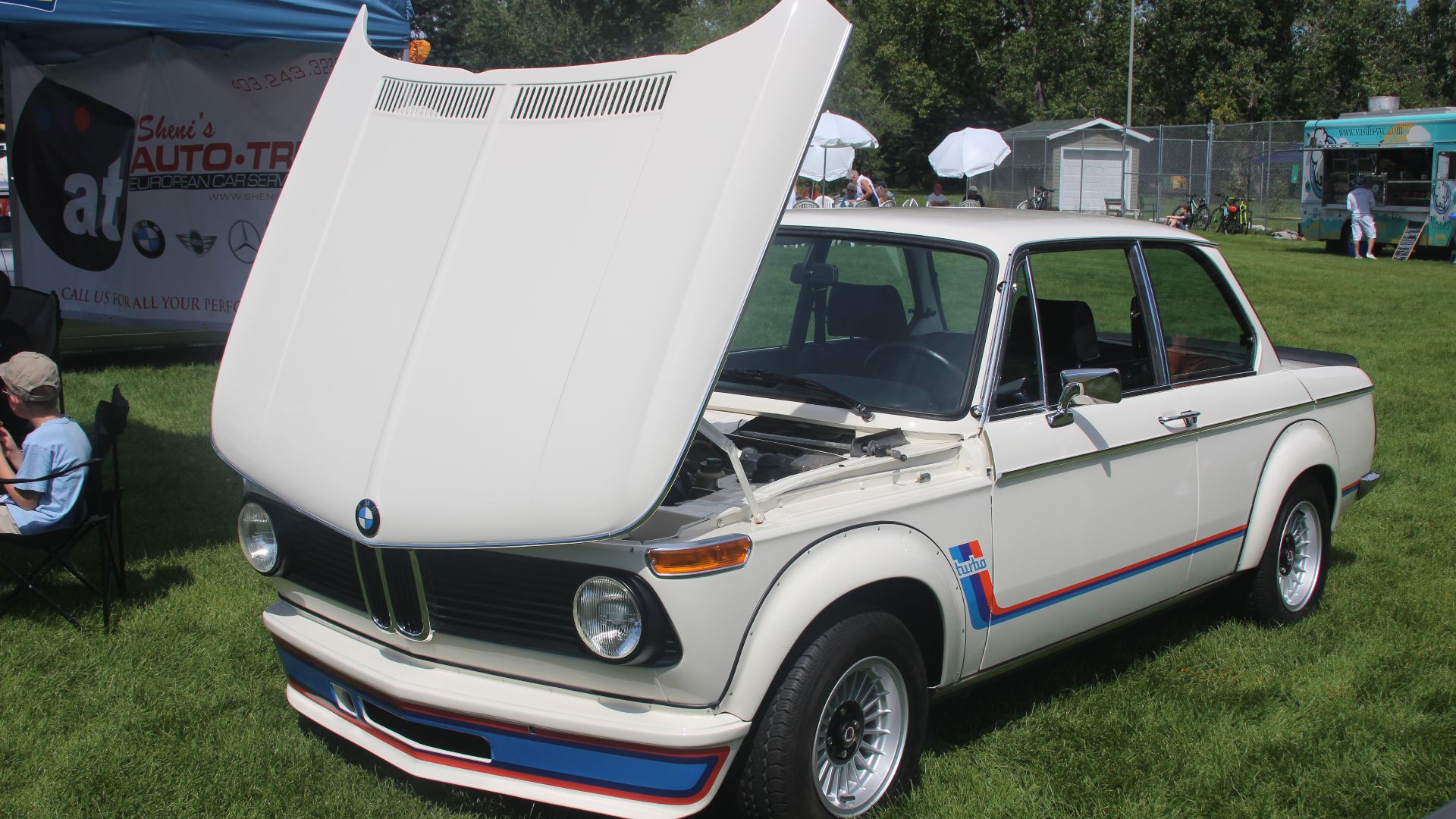 dave_7 from Canada, Wikimedia Commons
dave_7 from Canada, Wikimedia Commons
Upgraded Brakes
To handle the increased performance, engineers installed internally ventilated disc brakes up front and larger drum brakes at the rear. While drum brakes were less effective at dissipating heat compared to discs, the larger size helped increase the braking surface area.
 BMW 2002 Turbo - A CarCrazedFool video by CarCrazedFool
BMW 2002 Turbo - A CarCrazedFool video by CarCrazedFool
Suspension Setup
The front suspension employed McPherson struts with coil springs and anti-roll bars, while the rear used a semi-trailing link axle. This design created distinctive handling characteristics that required skilled driving in corners, particularly in wet conditions where the rear could step out unpredictably.
 1976 BMW 2002 Overhaul Episode 4 Front Suspension by David's Garage
1976 BMW 2002 Overhaul Episode 4 Front Suspension by David's Garage
Limited Slip Differential
As a standard feature, a limited-slip differential helped control the power transfer to the back wheels. This was an important feature since when the boost came on, the automobile had a propensity to overrun its relatively small tires. Without it, the Turbo would struggle to manage traction effectively.
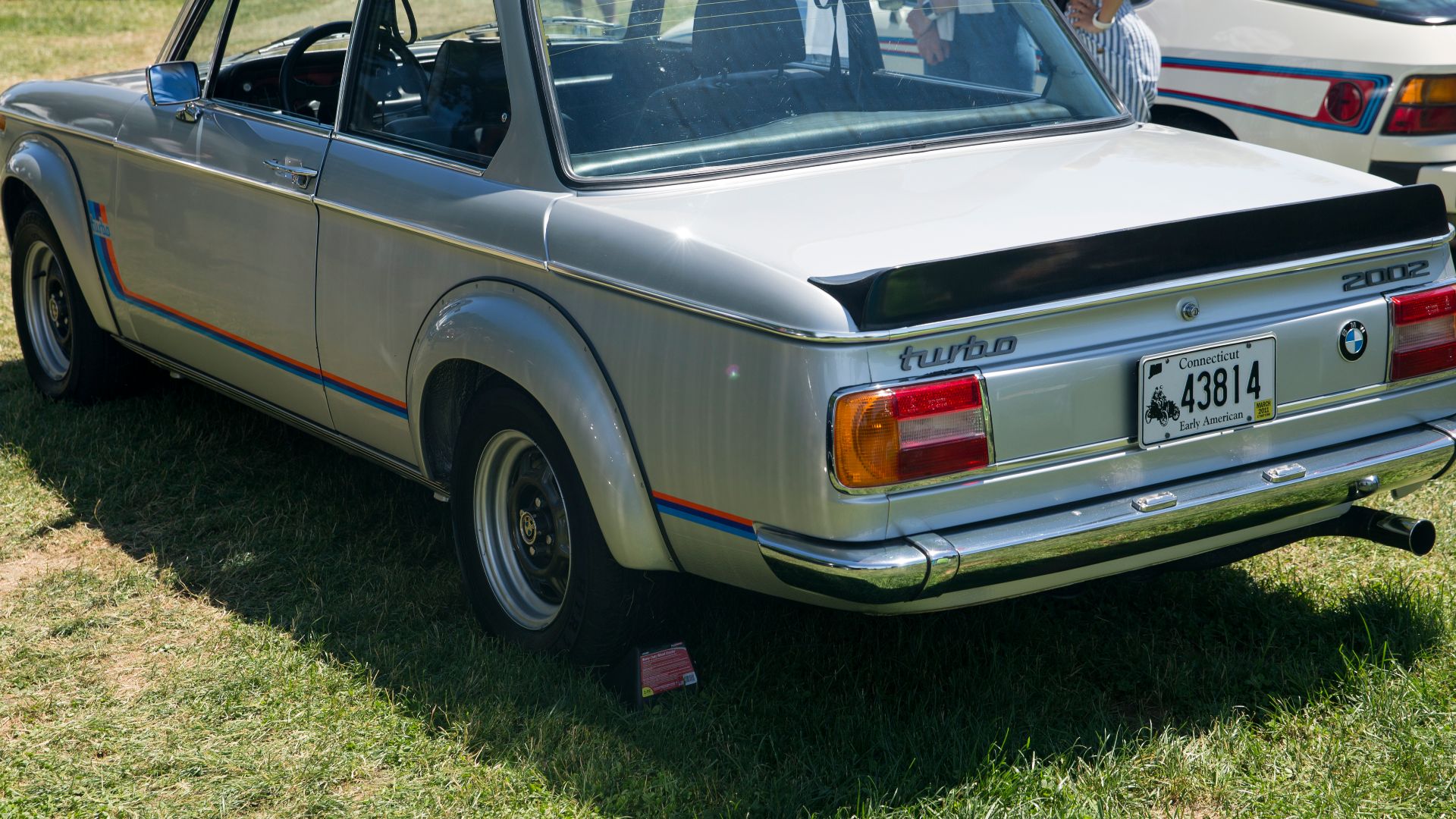 Mr.choppers, Wikimedia Commons
Mr.choppers, Wikimedia Commons
Lightweight Construction
With a weight of 1,080 kg (2,381 lbs), the 2002 Turbo's power-to-weight ratio was superb. Despite turbo lag, its lightweight design greatly aided in its agile handling and rapid acceleration. This low weight was made possible by the thin body panels and minimal sound insulation.
Dimensions And Proportions
The vehicle measured 4,220 mm long and 1,630 mm wide, hence drawing compact proportions. Compared to modern cars, its narrow body, minimal overhangs, and excellent visibility provided good driving advantages, mainly on narrow European roads where it could thread through tight spaces effortlessly.
Visual Elements
Widened wheel arches with bolt-on fiberglass extensions, a rubber rear spoiler, and a front air dam separated the Turbo from other 02 models. These functional elements improved stability at high speeds while giving it an aggressive appearance that announced its performance capabilities from every angle.
BMW Motorsport Colors
BMW Motorsport GmbH's (predecessor to M GmbH) now-iconic blue-violet-red stripes were a highlight. Available widely in Polaris silver or Chamonix white, these hues accentuated its racing history design. Through the M division, such characteristic stripes eventually came to represent their high-performance cars.
Wheel And Tire Setup
The car had 13-inch steel wheels, with alloys available as an option. The tire size was 185/70 HR 13 on 5.5—or 6-inch rims, despite seeming narrow by modern standards. Some of these wheels were similar in structure to those that would later appear on the E21 3-Series.
Tire Performance Limitations
Stock tires often struggled to handle the power delivery. Besides, wheelspin was common when the boost arrived, creating challenges for drivers accustomed to more progressive power in naturally aspirated cars. Many owners upgraded to wider tires while maintaining a period-correct appearance to improve traction.
Interior Visibility Advantages
Pencil-thin pillars and an airy greenhouse provided all-around visibility. The low beltline and expansive glass area created a "fishbowl" effect that modern cars cannot replicate due to safety regulations. This openness enhanced the driving experience and also made the compact car feel much more spacious.
 1975 BMW 2002 Turbo by AutosportDesigns
1975 BMW 2002 Turbo by AutosportDesigns
Dashboard Features
An updated dashboard from earlier 02 Series models was present. The two-piece instrument cluster included the additional boost gauge that became a signature element of later turbocharged BMWs. The red instrument panel illumination set a sporting tone, especially at night when the gauges glowed ominously.
 Driving the BMW 2002 Turbo - Backroads, Highway, Idle - Oldenzaal Classics by Oldenzaal Classics
Driving the BMW 2002 Turbo - Backroads, Highway, Idle - Oldenzaal Classics by Oldenzaal Classics
Interior Elements
Within the cabin came a red-trimmed instrument panel, sports seats, and a leather steering wheel. Two additional gauges mounted centrally displayed turbo boost pressure and a clock, exclusive to the model. The spartan interior reflected European sports car philosophy of the 1970s.
 Studio Video: 1974 BMW 2002 Turbo by ClassicDotCom
Studio Video: 1974 BMW 2002 Turbo by ClassicDotCom
Acceleration Capabilities
The 2002 Turbo accelerated from 0 to 100 km/h in 7.0 seconds and reached a top speed of 211 km/h. These numbers put it among the fastest production cars of its era. The sprint to 160 km/h (100 mph) took around 18 seconds.
 BMW 2002 Turbo - A CarCrazedFool video by CarCrazedFool
BMW 2002 Turbo - A CarCrazedFool video by CarCrazedFool
Characteristic Turbo Lag
Without modern turbocharging refinements like intercoolers, wastegates, or variable valve timing, the car exhibited pronounced lag. Power arrived suddenly around 4,000 rpm, creating a dual-personality driving experience. Below the boost threshold, it drove like a normal 2002; above it, it transformed into something demanding.
Sound Signature
For many years, the characteristic whistling sound defined the turbocharged BMWs. This high-pitched sound, along with the intake roar and the snarl of the four-cylinder engine under full throttle, was an essential component of the car's mechanical symphony.
 BMW 2002 Turbo - A CarCrazedFool video by CarCrazedFool
BMW 2002 Turbo - A CarCrazedFool video by CarCrazedFool
British Motoring Press Response
UK automotive journalists criticized its turbo lag. They noted that the turbo lag made it difficult to drive the car smoothly, especially in low-speed conditions. Even with all the critiques, it was seen as Europe’s first production car with a turbocharger.
Limited Production Run
BMW manufactured only 1,672 examples over 18 months. All of these vehicles were manufactured in left-hand drive configuration, despite being available for purchase in countries like the UK, where right-hand drive is standard. The rarity resulted partly from manufacturing challenges but primarily from difficult market conditions.
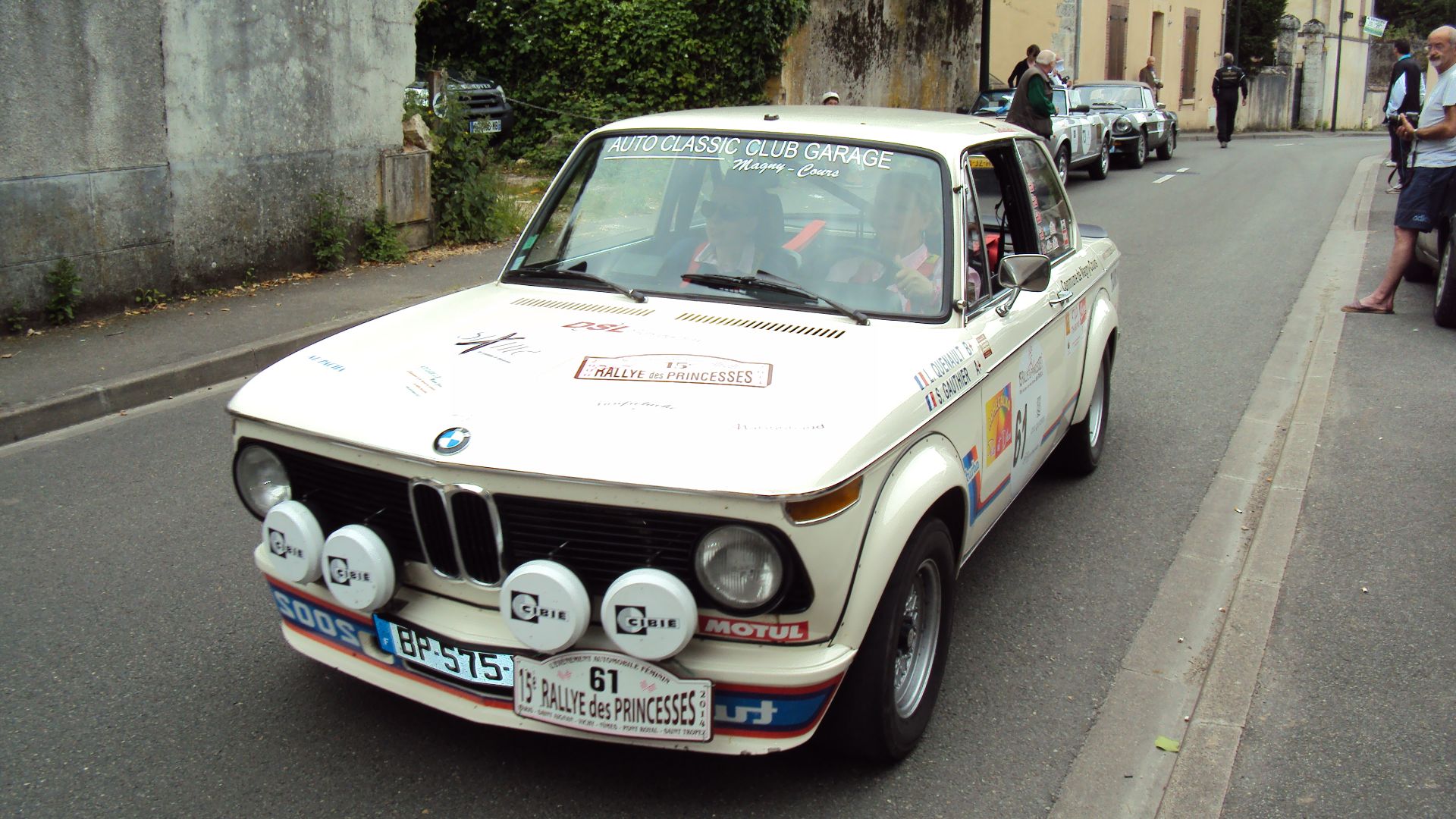 Blood Destructor, Wikimedia Commons
Blood Destructor, Wikimedia Commons
Price When New
Originally priced at 18,720 Marks (approximately 9,400 Euros or $11,000), the 2002 Turbo was worth its performance level. Today, well-preserved examples can fetch over 100,000 Euros at auction. This represents one of the highest appreciation rates among classic BMWs, underlining its rarity.
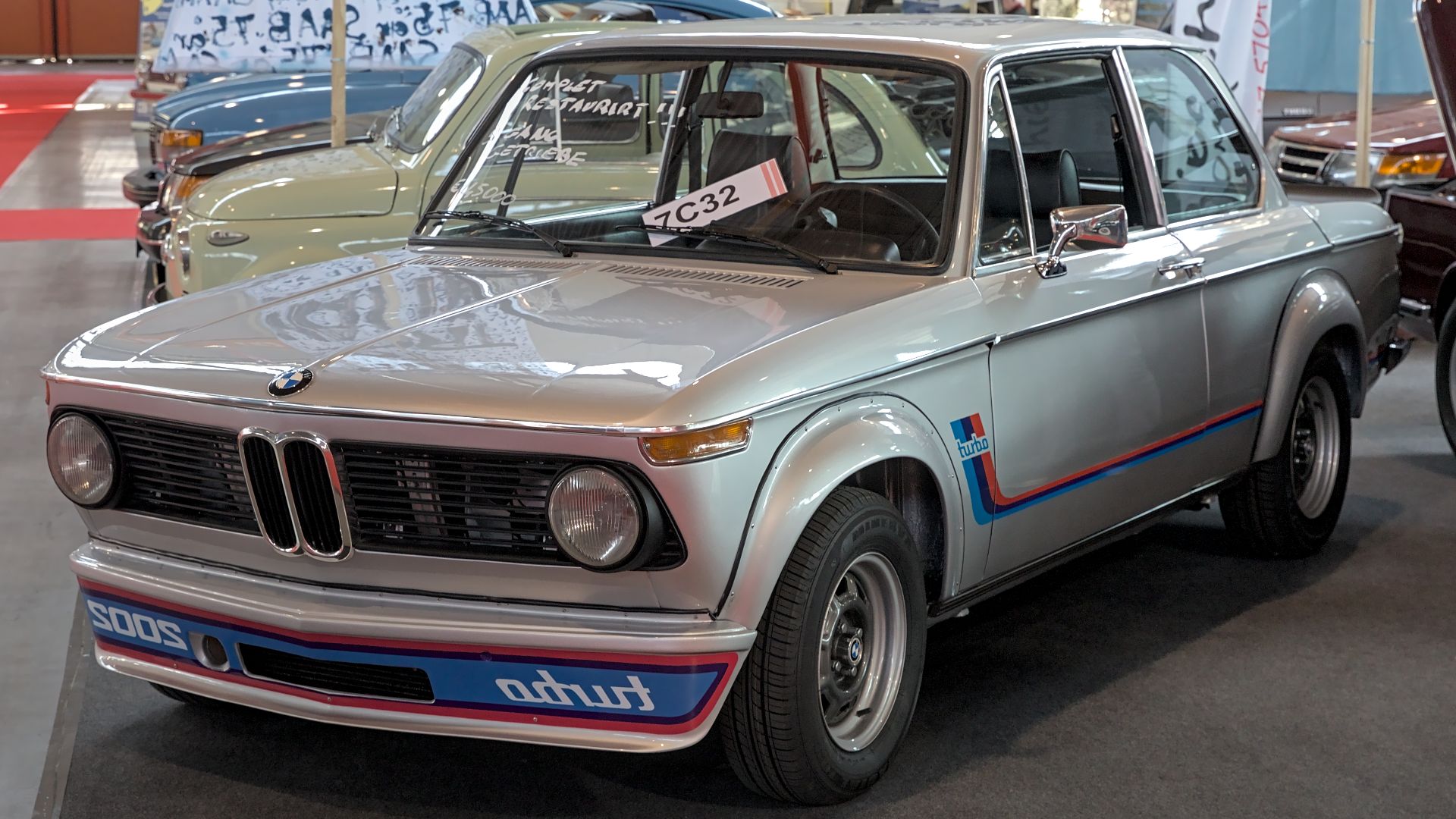 Alexander Migl, Wikimedia Commons
Alexander Migl, Wikimedia Commons
Diana Special Edition
Twelve custom 2002 Ti models were apparently built to celebrate the wedding of racer Hubert Hahne to Diana Korner. These special editions showcased twin headlights from the 2800 CS, leather interiors, and Italian aluminum wheels. Each car was painted a different color.
 BMW 2002 ti 1/24 HASEGAWA Model car build [Full version] by A4 Garage
BMW 2002 ti 1/24 HASEGAWA Model car build [Full version] by A4 Garage
Auction Estimates
Today, prices for BMW 2002 Turbos vary widely, depending on their condition and mileage. According to Glen March, some auction houses have estimated the value of a restored 1974 BMW 2002 Turbo at around 150,000 Euros ($163,647).


